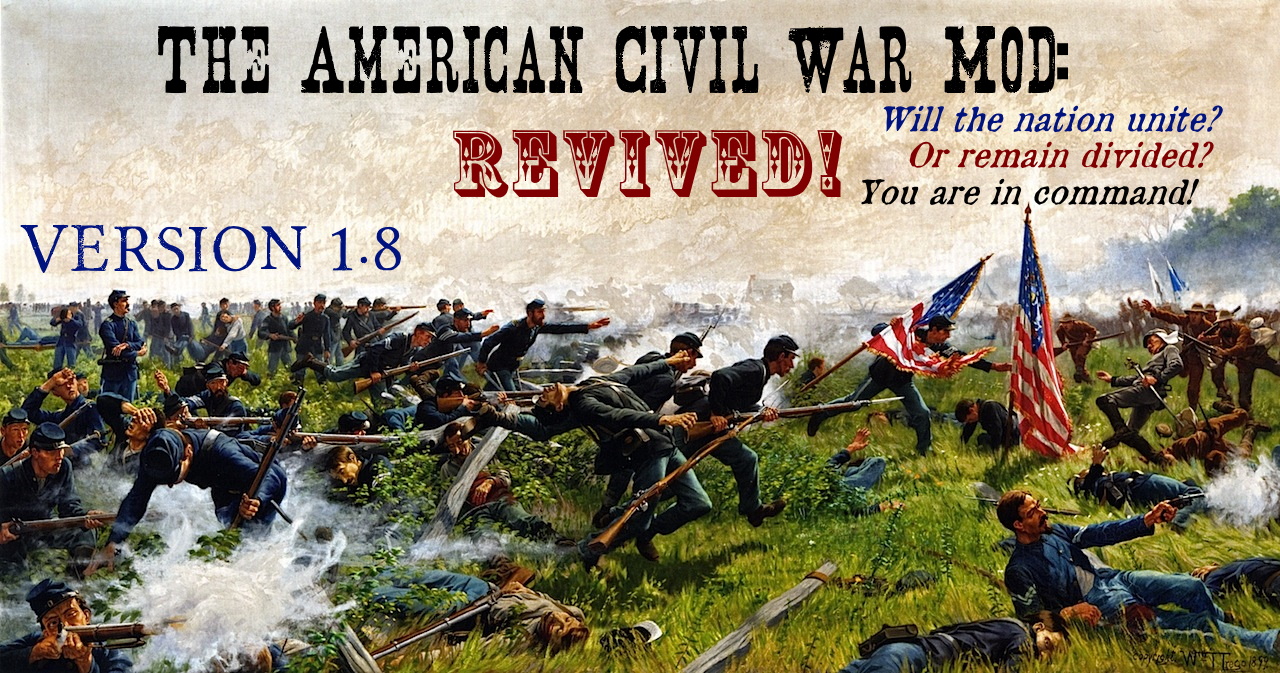
"In your hands, my dissatisfied fellow-countrymen, and not in mine, is the momentous issue of civil war." ~ Abraham Lincoln
If you have installed the mod before, you must delete any previous versions of the mod and start a new game. Never overwrite any files or try to play a saved game from a previous version of the mod.
- Download the winrar package called, "The American Civil War Mod Revived v1.8", and save it to your desktop or another preferred destination that you can easily access.
- Open the package and extract the folder inside called, "The American Civil War Mod Revived", to your modules folder ( default location should be, "C:\Program Files (x86)\Steam\steamapps\common\MountBlade Warband\Modules").
- Start Mount & Blade: Warband, select the mod from the drop down menu, and play!
You can join the mod's discord server here: Discord.gg
After many months of hard work, it's finally here, version 1.8 of the American Civil War Mod: Revived! There are many exciting new updates to share with you all that I think you will be thrilled to experience, but first I wish to take a moment to express my gratitude to those who generously offered their skills, knowledge, and expertise in service of the mod, and who's enormous and steadfast efforts have made all of this possible, including such names as Matsuri5, Johandros, Useful Lesbian (Eldar), Skepalt, ArchDukeOvHell, Fallouthobo, and Luke_SkyOtter. You all have done great work, making the mod into something I never imagined would ever happen, and not one bit of your kindness and generosity goes unappreciated. From providing models and assets, to help with coding, to troubleshooting bugs and errors, and simply play testing the mod, all of your work has been essential to the success of this project, and so on behalf of myself and the community, I offer you all a most humble and sincere thank you.
A Brief Notice About the Current State of the Mod

It is preferable that we get the bad news out of the way first, so I am obliged to inform you all of certain issues that the mod is having before we begin to talk about the new content.
Unfortunately this will likely be the last update until a new source code can be made. Although Matsuri5 and Johandros did a lot of excellent work on the mod, they are both no longer working on this project because they failed to follow the quality control protocols that I laid out for them, and this has caused a number of serious problems that have now made it necessary for me to build a new source code from scratch. There will be a note provided in the mod's package and on the download page detailing these problems, and if anyone thinks they can help fix any of those issues without me having to rebuild the source code, do not hesitate to get in contact with me either here on Moddb, or on Discord.
Now, without further ado, let's jump right into all the magnificent new content!
New Battlefields
Probably one of the most visually obvious updates to the mod are the new maps for certain scenes on the campaign that have been completely overhauled to represent the battles that took place there historically. As we have touched on in previous articles, most of the real life battlefields spanned such a vast stretch of landscape, it would be impossible to recreate them to a 1:1 scale, so these scenes are focused one one sector of the battlefield, and scaled down to a more manageable size for the game to handle. Please keep in mind that each of these scenes are replacing villages on the map, so the player will always spawn on the defenders side during battles, no matter what faction they use or who initiates the battle. We will explore these maps a bit and talk about them in more detail below.
Manassas (Bull Run)
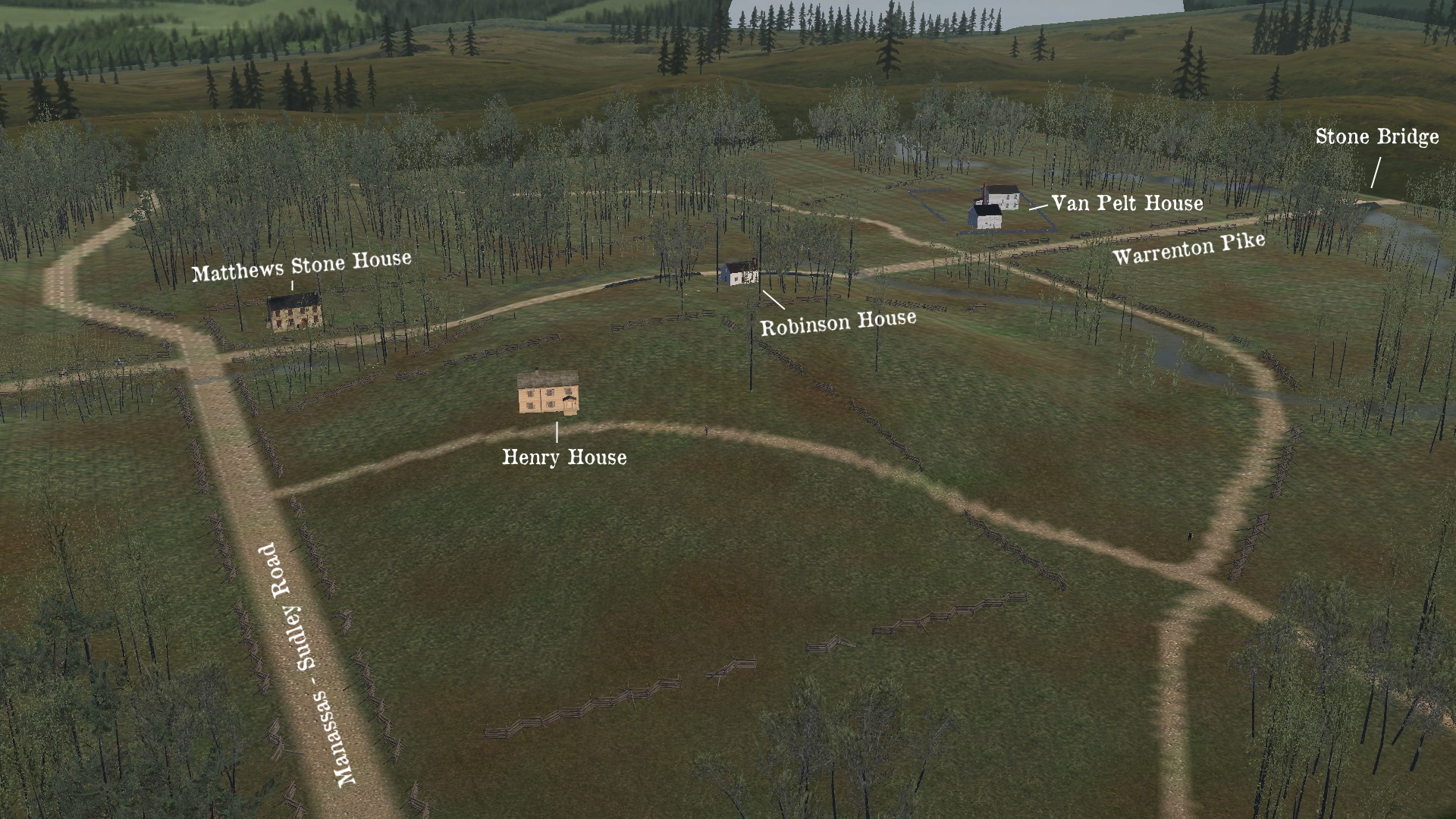
This map is based on the action around Henry House Hill, which not only saw heavy fighting in the first battle of Manassas, but was ground that was crossed over and in very close proximity to the second battle. As with some of our other maps, this scene has several custom historical buildings.
Henry House
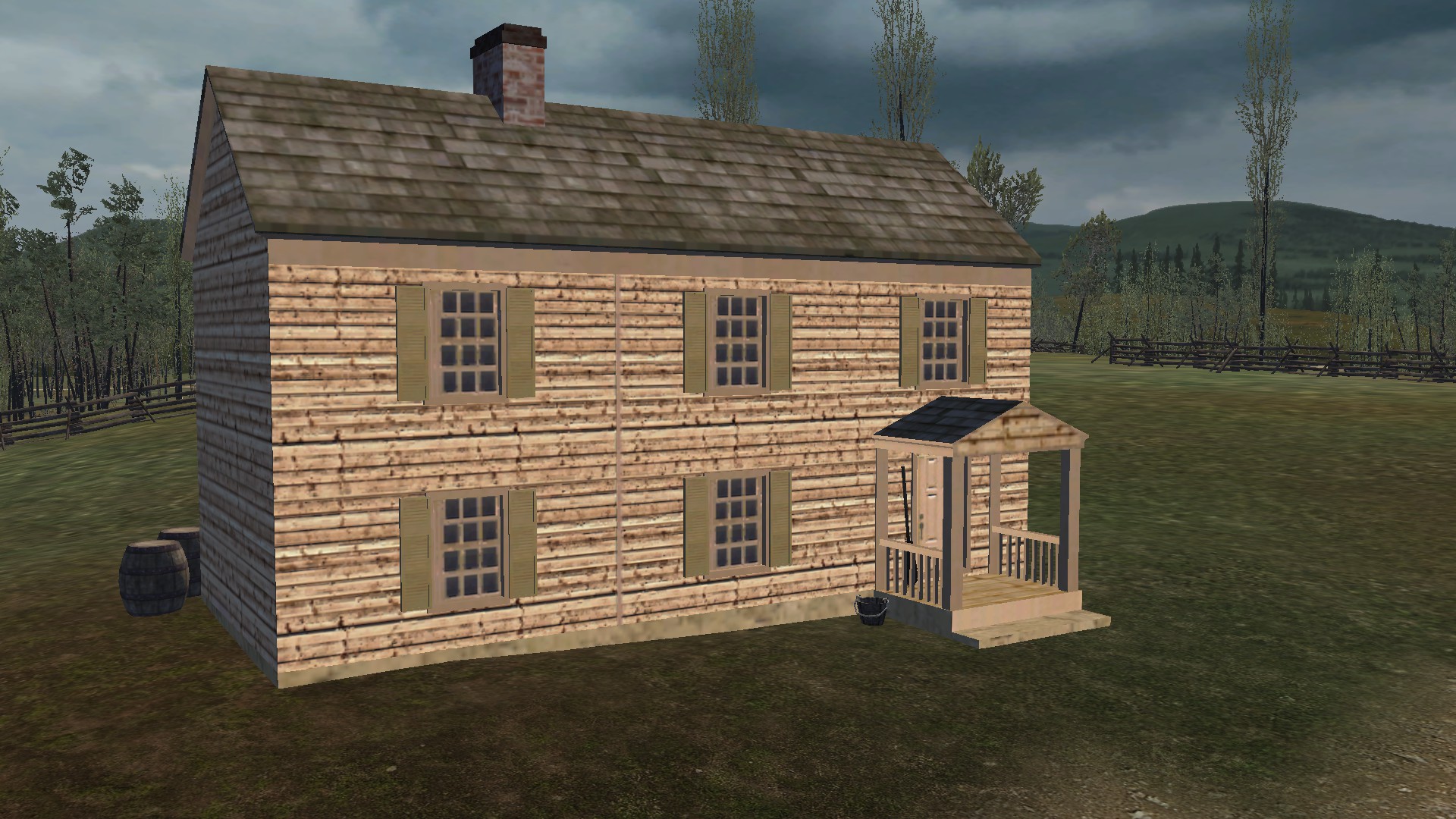
The Battle of First Manassas (Bull Run) culminated on the Henry property. Union artillery fired on the house to drive away Confederate sharpshooters, unaware of 84-year old Judith Henry who remained in her home bedridden, and shared the home with her daughter Ellen, as well as a hired teenage slave, Lucy Griffith, who assisted with domestic chores. The Union artillery fire crashed through the house, mortally wounding the widow Henry. By day's end Judith Henry was dead, becoming the battle's only known civilian fatality. The house was destroyed in the fighting, and the surrounding landscape would be forever redefined by the events of July 21st, 1861.
Matthews Stone House
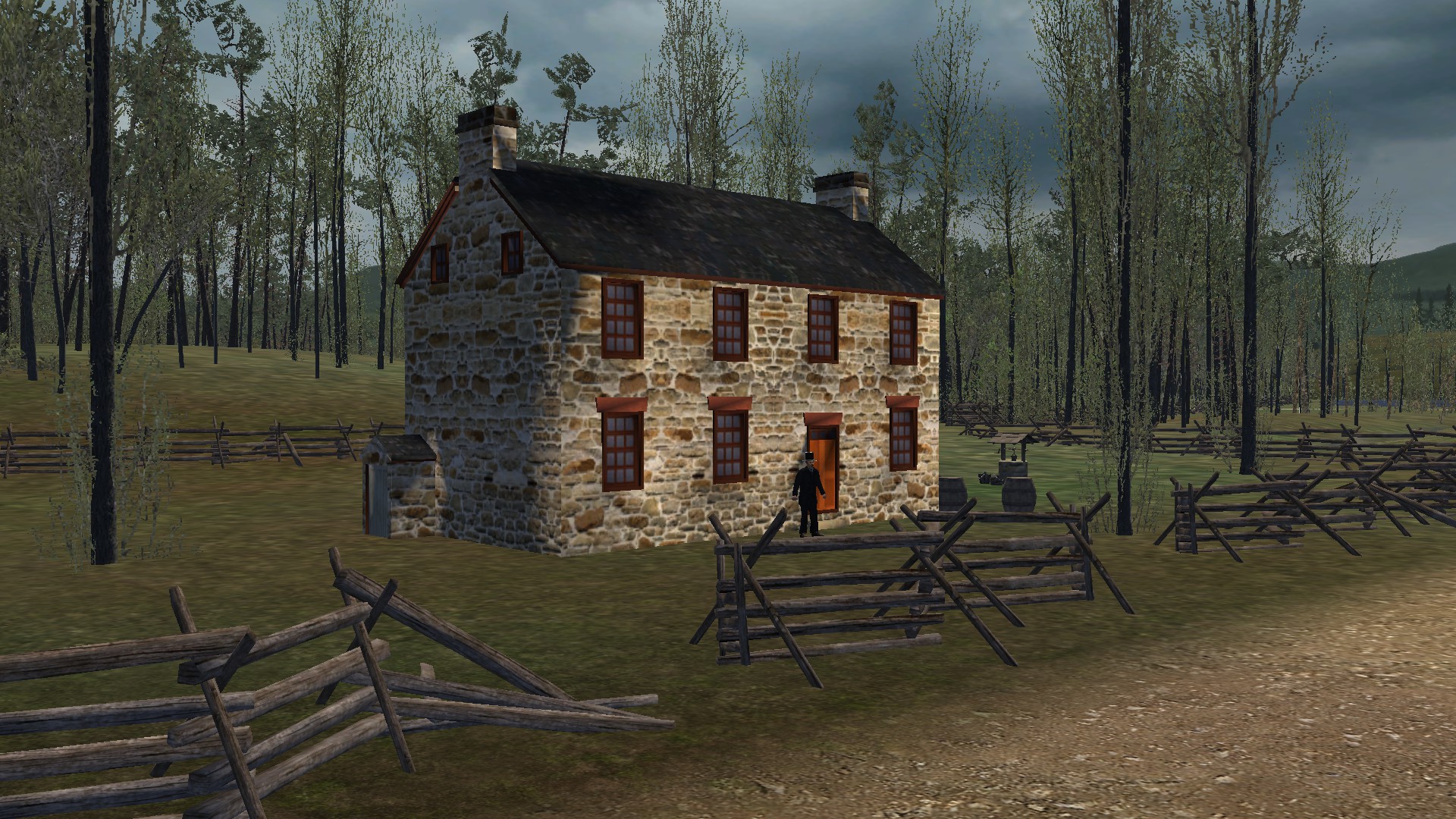
In 1850, the Clarke family sold the Stone House property to Henry P. Matthew, who intended to farm the land since its use as a toll road stop had diminished, and the Matthew family lived there for the next decade. During the Battle of First Manassas, the Stone House changed hands between Union and Confederate forces several times. Between 10:00 a.m. and 12:00 p.m., ten Union and six Confederate regiments clashed in the vicinity of the Stone House. As a result, 1,054 men were wounded during those two hours of fighting. Although the battle eventually shifted away from the Stone House, surgeons and Union soldiers soon began to seek refuge inside the house. Because the house had strong stone walls, a well in the yard, and was close to the main road back to the hospitals in Washington, it was an ideal site for a hospital.
The next day, the scene at the Stone House remained a grisly one. An eye-witness described it as such: "In this building were 32 wounded, many of them dreadfully mangled by cannon shot. There was but a single surgeon, and he was young and apparently inefficient. Men lay on the floor with their clotted wounds still undressed. Some had died and not been removed…"
Throughout the rest of the day, the Stone House was constantly under fire as the battle raged nearby, with some projectiles entering the house and further wounding a few soldiers. As the Union line crumbled toward the end of the battle and the Union Army retreated from the area, the Stone House came under Confederate control once again, and continued to serve as a hospital throughout the rest of the afternoon. After the battle came to an end, the Stone House continued to serve as a busy hospital, since it was one of the few buildings on the battlefield located on a major road.
During the Second Battle of Manassas in August 1862, the Stone House was quickly converted to a hospital once again. Union surgeons marked the building with a flag and treated the wounded throughout the first day of the battle. Some Union troops also buried their men in the yard of the Stone House. Like the previous battle, the Stone House was under Confederate control at the battle's conclusion, but unlike the previous year, the captured Union troops in the house were not taken prisoner, but instead paroled. On September 2nd, five days after the battle began, the last ambulance left the Stone House and with that, the house had seen its final action of the war. It is unsure when the Matthews family returned to their home after the Civil War, however in October 1865, the Stone House and the adjacent land were sold to Mary Starbuck.
In 1949, the Stone House was sold to the United States Government, and two major renovation projects have taken place since then, including re-roofing the structure and installing new electrical and plumbing systems. Although the Stone House is unoccupied today, various tours and interpretive programs take place there as part of Manassas National Battlefield Park.
Robinson House
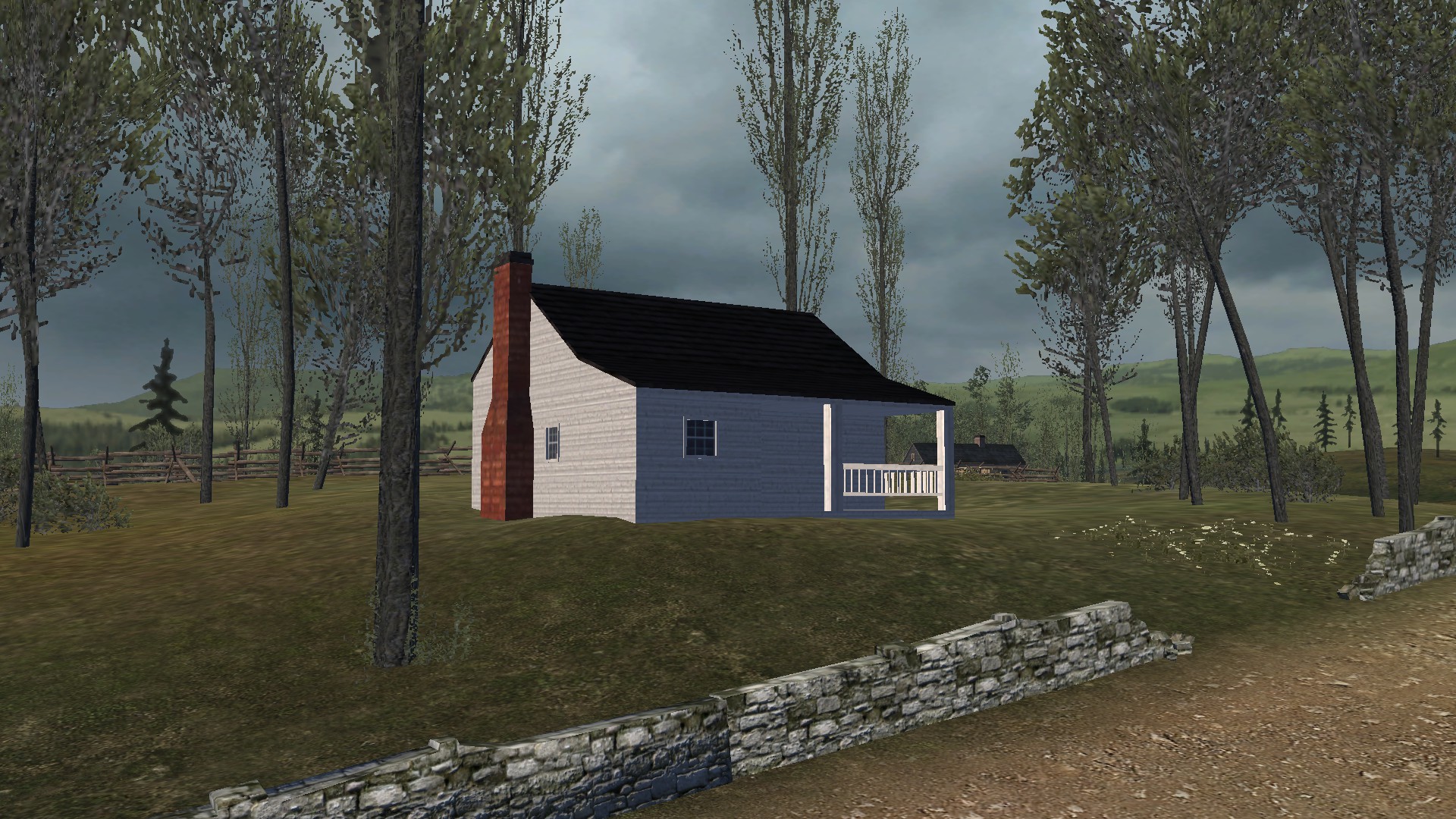
The Robinson House was named for the family of James "Gentleman Jim" Robinson, a free African American, who constructed the homestead in the 1840's after purchasing the land from a local planter, John Lee. The land was in a prime location that would make James Robinson one of the wealthiest African Americans in the Manassas area, but would also bring the Civil War right into his front yard.
Before the fighting began, James Robinson took his family to a neighbor's home where he hoped they would be safe. James attempted to reunite with his family after securing the home, but was caught in the crossfire of the battle and had to take shelter under a bridge over Young's Branch until the fighting had stopped. Confederate General Thomas J. "Stonewall" Jackson's forces held the line on one side of the Robinson House as the Union troops under Erasmus D. Keyes attempted to overcome them, and the Confederates held this ground so well that it earned Jackson the nickname of "Stonewall", and his men were from then on known as the "Stonewall Brigade".
That first battle left thousands of bodies littering the fields throughout Manassas, and for days afterwards, the Robinson family buried many of those bodies in unmarked graves. Members of the Robinson family reported that they were still digging up the bones of some of these soldiers well into the 20th century.
The Second Battle of Bull Run lasted for about a week, and again the battle raged around the Robinson House. Following the destruction of Henry House during the First Battle of Bull Run, Robinson House was one of the most strategically located buildings on the battlefield. Because of this it was used as a Union hospital and planning station. The battle resulted in another Confederate victory, and the casualties on both sides were even higher following this second battle. One reporter described the scene in the Robinson House:
"The Robinson House is used as a Yankee hospital. In a visit there this morning, I found 100 of them [Union soldiers] packed in the rooms as thick as sardines. ... The wounds of the majority were undressed, the blood had dried upon their persons and garments, and altogether there (sic.) the most horrible set of beings it has been my lot to encounter."
In sworn testimony before the Southern Claims Commission, James Robinson described how following the battle, troops raided his farm in search of food and supplies, causing more than $2,000 in damages, which in today's money would amount to more than $60,000. The house remained in the Robinson family up until 1936 when it was sold to the National Park Service. The Robinson House had managed to remain intact, in spite of its location in the center of heavy gunfire and artillery barrages, but it was destroyed by arsonists in 1993 and the perpetrators were never caught. Just a few weeks prior to the destruction of the house, someone had vandalized the structure with graffiti. The National Park Service has no plans to rebuild the structure, but they did conduct an archeological dig on the property, which resulted in the publication of the most significant document on the house and the Robinson family, which had owned and occupied it.
Van Pelt House and Barn
The family of Abraham Van Pelt had been living on this 230 acre farm overlooking Bull Run for more than a decade when the Civil War began. The Van Pelts’ commanding ridge anchored the Confederate left, held by Colonel Nathan Evans’ brigade. The Warrenton Turnpike, which passed through the farm on its way across Bull Run, became a major avenue of approach for Union troops. Near 6:00 a.m., Union Lieutenant Peter Hains ordered his gunners to fire their 30-pounder Parrott rifle on the Van Pelts’ prominent white frame house, visible from more than a mile away. The opening salvo sent shells crashing onto the farmstead, with the second shot landing on the tent of Confederate Captain E. P. Alexander’s signalmen, who were manning a signal station on the hill.
The Van Pelts being Union loyalists living in the South, made strong attempts to maintain their farm during the war. During the Second Battle of Manassas, Union troops commandeered the house and outbuildings for hospital purposes, and the Van Pelts temporarily moved to a tenement on a nearby farm. Facing repeated Confederate harassment, Abraham ultimately joined his wife, Jemima, in returning to their native home of New Jersey later in the war, while their son Augustus became a Union scout, and their daughter Elizabeth stayed behind to manage the farm.
After the war, a married daughter of Abraham Van Pelt, Evaline Cummings, filed a claim for damages to the estate of her father, who died in 1866. Much of the claim was disallowed, however, due in part to the uncertain allegiance of her mother and sister. The Van Pelts’ house survived into the 20th century, but lay in ruins by the time the National Park Service acquired the site in 1936. The sparse ruins today conceal the story of the first battle’s opening action and a Northern family caught amid the swirling events of war in the border state of Virginia.
Shiloh
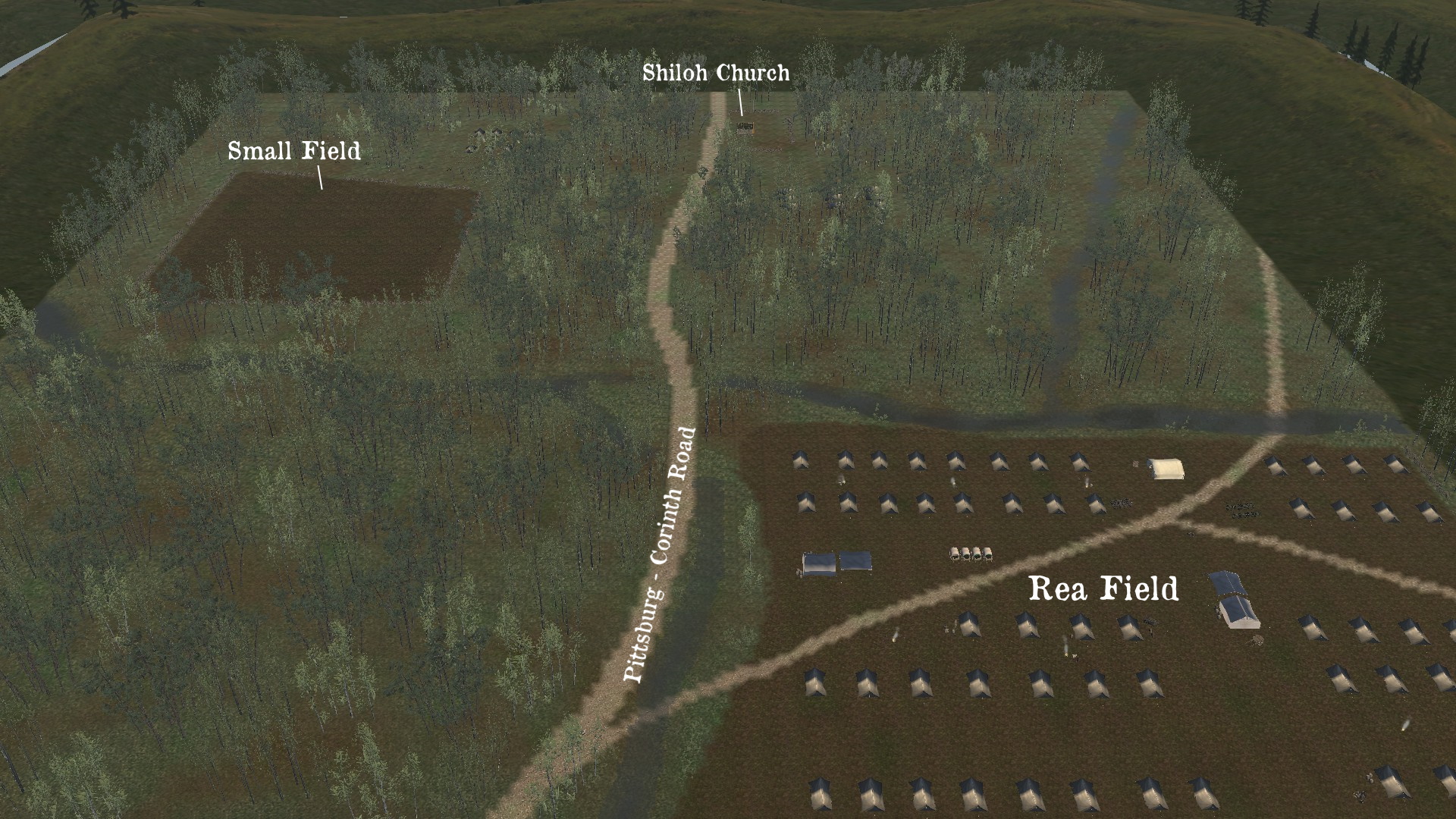
The Battle of Shiloh was fought between April 6th – 7th, 1862, in southwestern Tennessee, and is named after a small church in the vicinity named Shiloh which ironically translates to "place of peace" or "heavenly peace". The encounter proved devastating, not only for its tactical failure for the Confederacy, but for the extreme number of casualties. The carnage was unprecedented; nearly 110,000 troops took part in the fighting, with a total of roughly 24,000 men killed, wounded, and missing. The human toll was the greatest of any war on the American continent up to that date, with nearly twice as many casualties as all the previous major battles of the Civil War combined. The Confederacy's defeat at Shiloh ended their hopes of blocking the Union advance into Mississippi and doomed the Confederate military initiative in the West. Following the death in battle of their commanding general, Albert Sidney Johnston, Confederate morale plummeted as a result. After Shiloh, both sides realized the magnitude of the conflict, and understood it would be longer and bloodier than they could have ever imagined. General Grant, though victorious, was criticized in the press after being caught unprepared at Pittsburg Landing on April 6th. Critics called for him to be dismissed, but President Abraham Lincoln defended General Grant, declaring, “I can’t spare this man. He fights.”
The scene representing this battle in the mod focuses on the sector of the battlefield near Shiloh church, where the Confederates first made contact with Union troops commanded by General William T. Sherman.
Shiloh Church
In 1851, John J. Ellis donated four acres to the Methodist Episcopal Church for a house of worship. The original church was constructed of rough hewn logs, and was the scene of heavy fighting between Union and Confederate forces during the battle. At daybreak on April 6th, three Confederate infantry corps stormed out of the woods and swept into the southernmost Union camps, catching General Grant’s men unprepared. Intense fighting centered around Shiloh Church as the Confederates pushed the Union forces from that area. Despite heavy fire on their position, Union troops counterattacked but slowly lost ground and were forced to fall back northeast toward Pittsburg Landing. The church was destroyed soon after the battle, and a new wood frame structure was constructed on the site after the war in 1875. The present day stone church began construction in 1925, but due to a lack of funds, was not completed and dedicated until 1952. A reconstruction of the original Shiloh church was erected on the historical site by the Tennessee Sons of Confederate Veterans organization.
Franklin
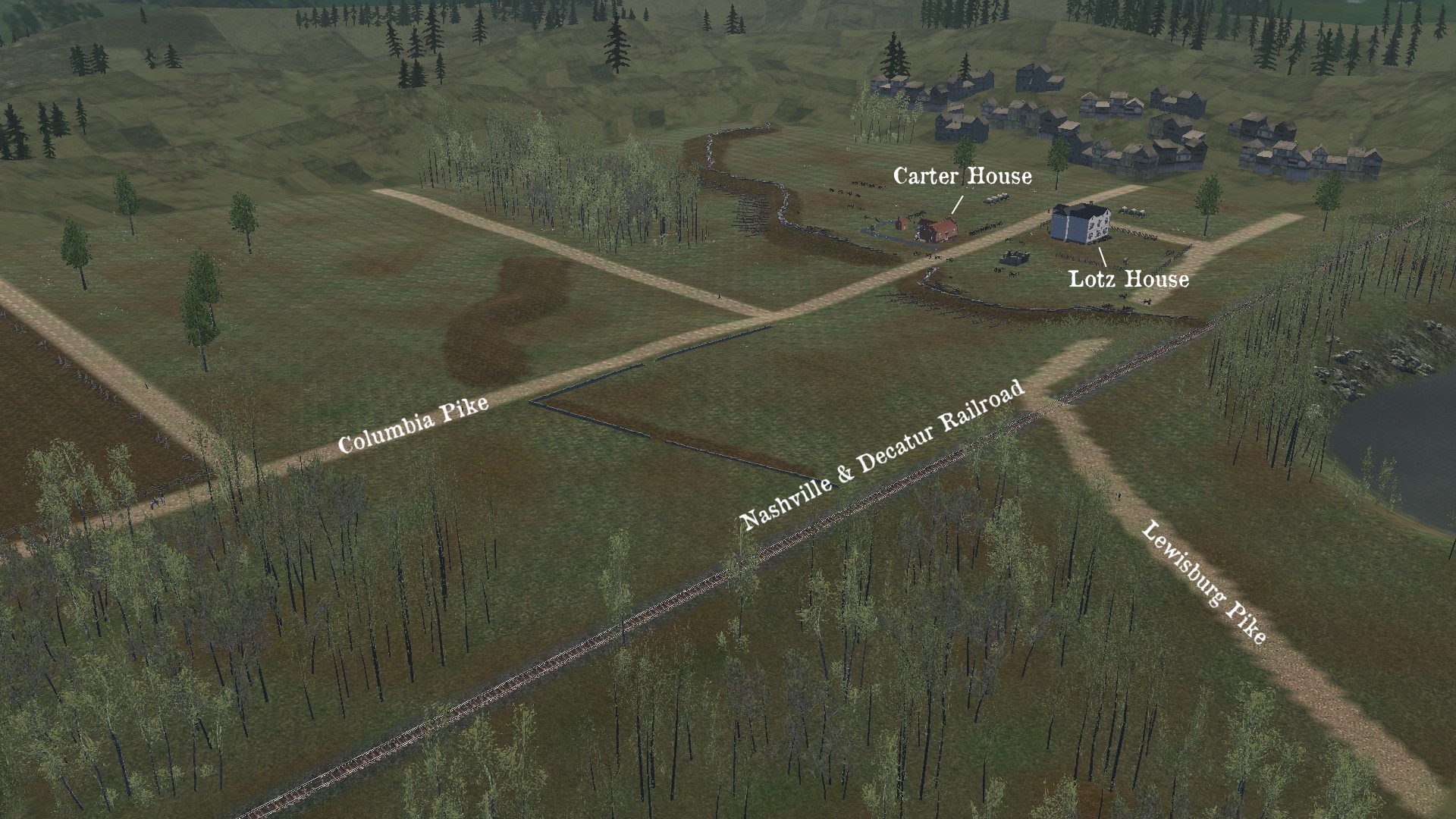
The Battle of Franklin was fought on November 30th, 1864, in Franklin, Tennessee, and it was one of the worst disasters of the war for the Confederate States Army. The Confederate assault of six infantry divisions, containing 18 brigades, with 100 regiments numbering almost 20,000 men, resulted in devastating losses to the men and the leadership of the Army of Tennessee. 14 Confederate generals (six killed, seven wounded, and one captured) and 55 regimental commanders were killed, wounded, or captured in the fighting. The Army of Tennessee under the command of Lieutenant General John Bell Hood conducted numerous deadly frontal assaults against fortified positions, and was unable to prevent Union Major General John Schofield from withdrawing his army to Nashville in good order.
Sometimes called the "Pickett's Charge of the West", the Battle of Franklin actually surpassed Pickett's charge in loss of life, as well as in ferocity. Pickett's total losses at Gettysburg was roughly 1,354, while at Franklin, the Army of Tennessee lost over 6,000 men, dead and wounded. Pickett's charge was made after a two hour long artillery barrage, while Hood's army charged without any preparation. Pickett's charge was across an open space of about one mile, while the advance at Franklin was for two miles in the open, in full view of the enemy's fortifications, and exposed to their fire. The Union defenders at Gettysburg were protected only by a stone wall, while the Union army at Franklin had carefully constructed earthworks to protect them. The charge of Major Generals John C. Brown and Patrick Cleburne penetrated deep into the Union defenses, part of which they clung to until the Union forces disengaged. The Army of Tennessee renewed their charge, time after time, even making a nighttime attack on the Union works, but were not able to gain a tactical victory.
The Army of Tennessee was badly damaged at Franklin, however, rather than retreat and risk the army dissolving through desertions, Hood advanced his 26,500 men against the Union army now combined under General George H. Thomas, firmly entrenched at Nashville which numbered more than 60,000. Hood was attacked by Thomas on December 15th – 16th at the Battle of Nashville, and was decisively defeated. Hood and his army were pursued aggressively, retreating to Mississippi with just under 20,000 men. The Army of Tennessee never again fought as an effective force and Hood's career was ruined.
Carter House
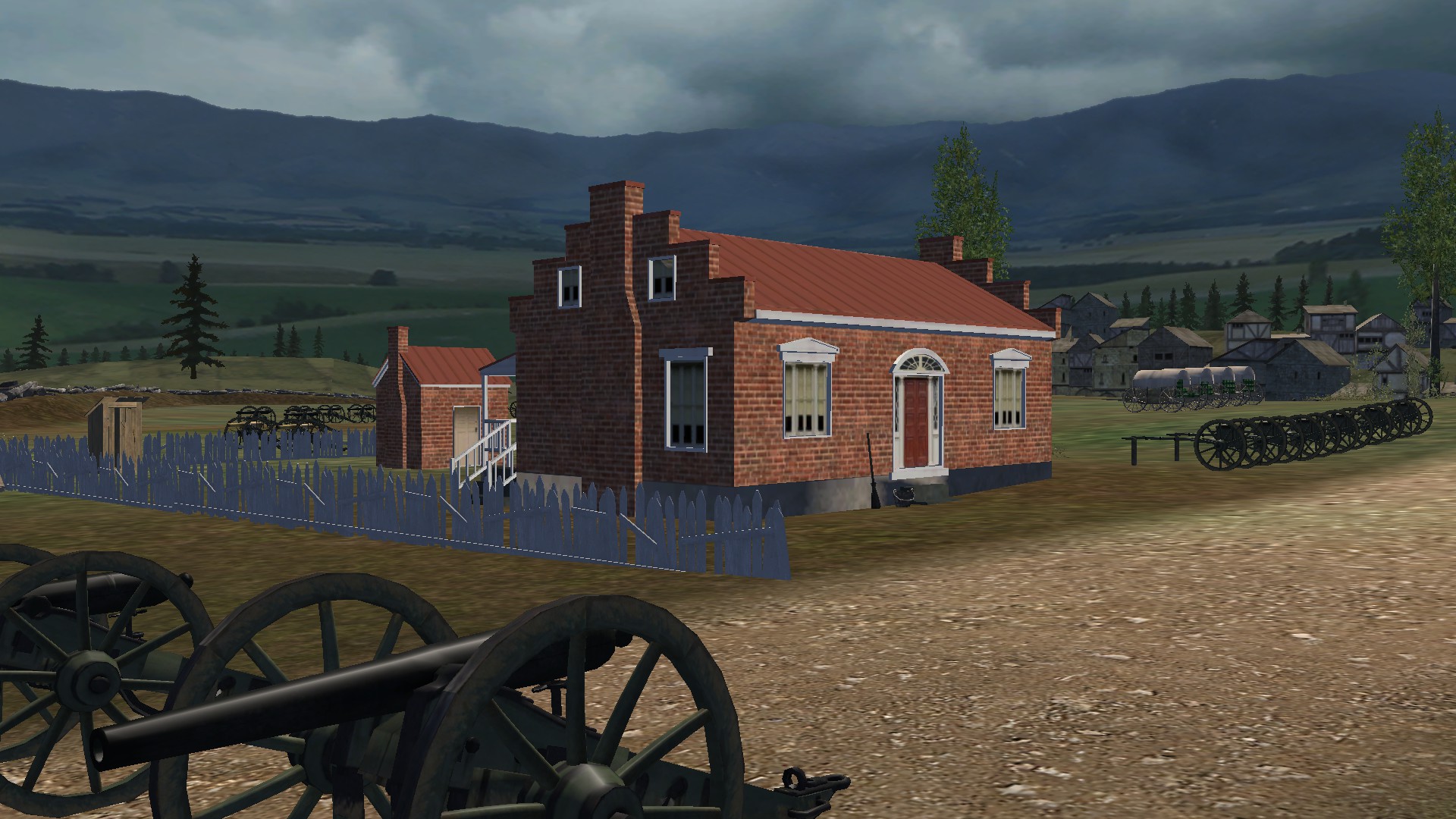
Fountain Branch Carter completed construction of the Carter House in 1830, and built a cotton gin on his property that became a much remembered landmark during the Battle of Franklin. In the years leading up to the Civil War nearly 30 enslaved people lived and worked on the farm. Prior to the battle, the house was taken over as the headquarters of the 23rd Army Corps commanded by Union Brigadier General Jacob D. Cox. Union earthworks were erected just south of the home extending to both the east and west of Columbia Pike. The Carter family took refuge in the basement of their home during the battle.
The middle son of Fountain Branch Carter, 24 year old Captain Tod Carter, was mortally wounded in the battle. Just 525 feet from his home, his horse was shot out from under him, and a volley of nine bullets struck the young captain. Meanwhile, his father, Fountain, his brother, Moscow, and his four young children, as well as the four Carter sisters, numerous other family members, two African American servants, a boy named Oscar and five members of the Lotz family, were huddled in the basement listening to the chaos and carnage unfolding above them and worrying about the fate of Tod. After the battle ended at around midnight, General Thomas Benton Smith arrived at the Carter home and informed Fountain Carter of Tod’s exact location on the battlefield. Smith then led Tod’s father and three of his sisters through the darkness with lanterns to go retrieve Tod and bring him home.
Tod Carter was still alive when he was found and brought to the house. There he lived for several more hours, surrounded by his family. Dr. Deering Roberts, the regimental surgeon, extracted the fatal bullet that had struck him in the head, while his two young nieces assisted. Tod Carter died of his wounds December 2nd, 1864, in the room just across from the one where he was born. Captain Tod Carter had come home for the first time in over three years when he fought with the 20th Tennessee Infantry at the Battle of Franklin, and was one of the lucky few who had a relatively pleasant death by comparison, being at home in the care of his family. For so many thousands more, they died in the company of their brothers in arms, as well as their enemies, on the battleground of Franklin.
Though the cotton gin no longer stands, it being burned and destroyed in the battle, the Carter House, as well as farm office, smokehouse, and kitchen, are still intact and illustrate the horror of the Civil War battle with over a thousand bullet holes still being visible riddling the walls.
Lotz House
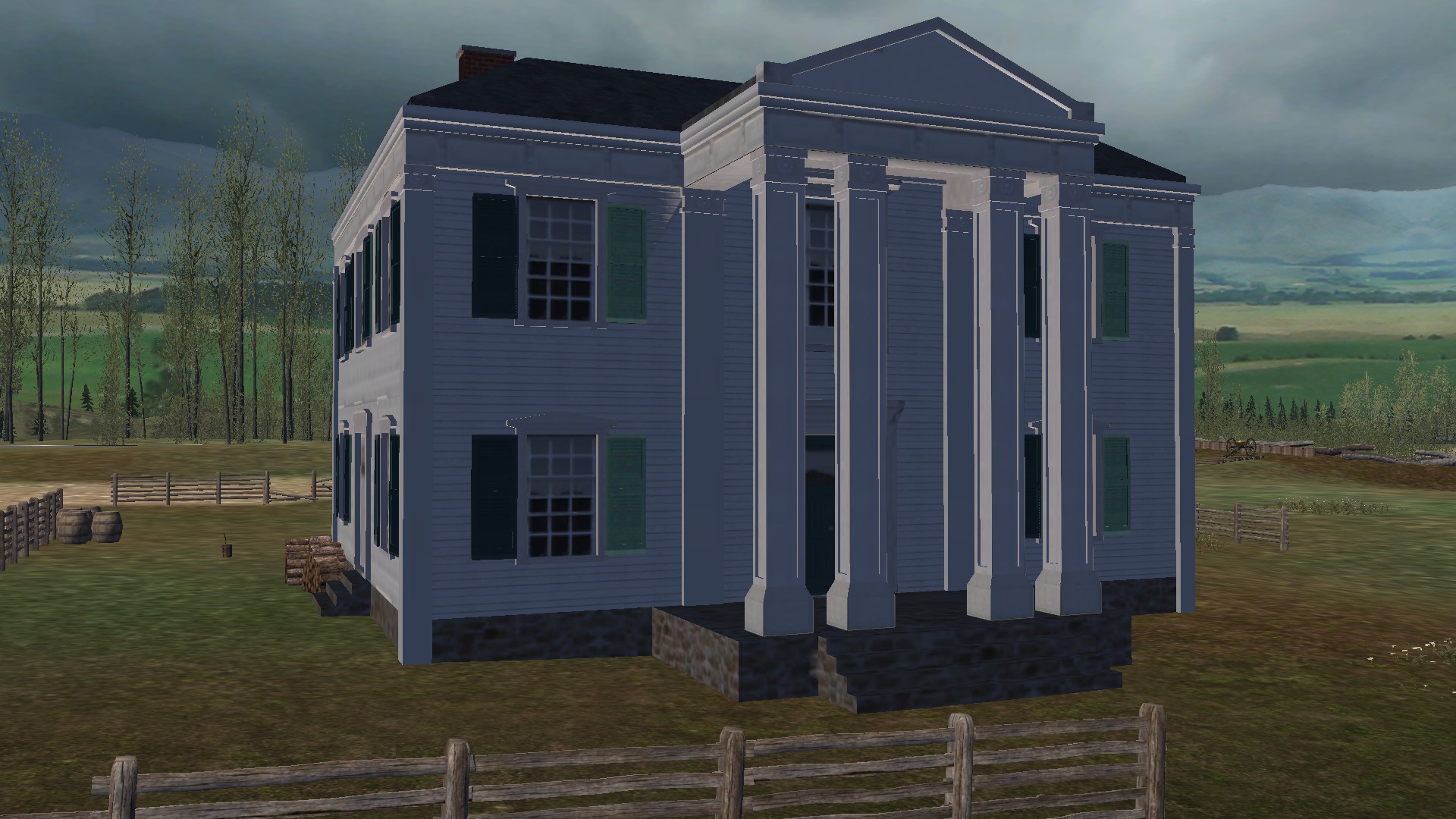
Johann Albert Lotz was born in Germany in 1820, and was a skilled woodworker who had worked his way up in the German guild system to the designation of "master craftsman". He came to the United States because other family members had moved there. Lotz met his wife, Margaretha, after he had arrived in New Orleans in 1848, and they eventually moved to Franklin and purchased five acres of land from the tract owned by Fountain Branch Carter. Lotz built his two-story frame house himself, without the use of slave labor. The construction and furnishings show details and woodcarving which attest to Lotz's skill. Lotz constructed furniture, cabinetry and made pianos. Margaretha bore six children, Paul and Amelia (from a former marriage), Augustus, Matilda and twins Julius and Julia.
Albert Lotz and his family were surprised at their home on the morning of November 30th, 1864, to find thousands of Union soldiers marching in front of their house heading north to Nashville, but unable to proceed across the swollen Harpeth River. The Union Army, expecting a Confederate attack, constructed earthworks and cut down every tree they could to prevent Confederate sniping. They were even said to have poisoned much of the water supply. The Lotz twins, Julius and Julia, went out to play at a nearby stream and were found dead, believed to have been killed by poison in the water according to available letters and diaries. However not all historians agree, saying that it is possible that they drowned.
Confederate troops attacked the Union army at 2:00 p.m., and the Union soldiers manned their fortifications on a line across the Lotz and adjacent Carter property. The Lotz family fled across the street to the Carter House and the two families hid in the Carter's basement, witnessing a five-hour long battle consisting of intense hand-to hand combat. When the two families emerged from shelter, the area was a wasteland; hundreds of bodies, including 17 dead horses, were among the casualties in the Lotz's yard. The south wall of the Lotz's house was blasted away and cannon fire created holes in the roof and floors. Cannonball holes and burns can still be seen inside the house today. Despite the damage, the structure still served as a field hospital, with Johann Lotz supervising the repairs on the house. Lotz was quick to repair the house, but was saddened that the repairs were done so hurriedly that the craftsmanship was shoddy.
Over the next 100 years, the house had many owners and gradually deteriorated until the Heritage Society of Franklin and Williamson Counties purchased it in 1974 to save it from demolition. It was listed on the National Register of Historic Places in 1976, marking the beginning of its restoration. In 2008, the Lotz House was opened to the public as a historical museum.
Carnton
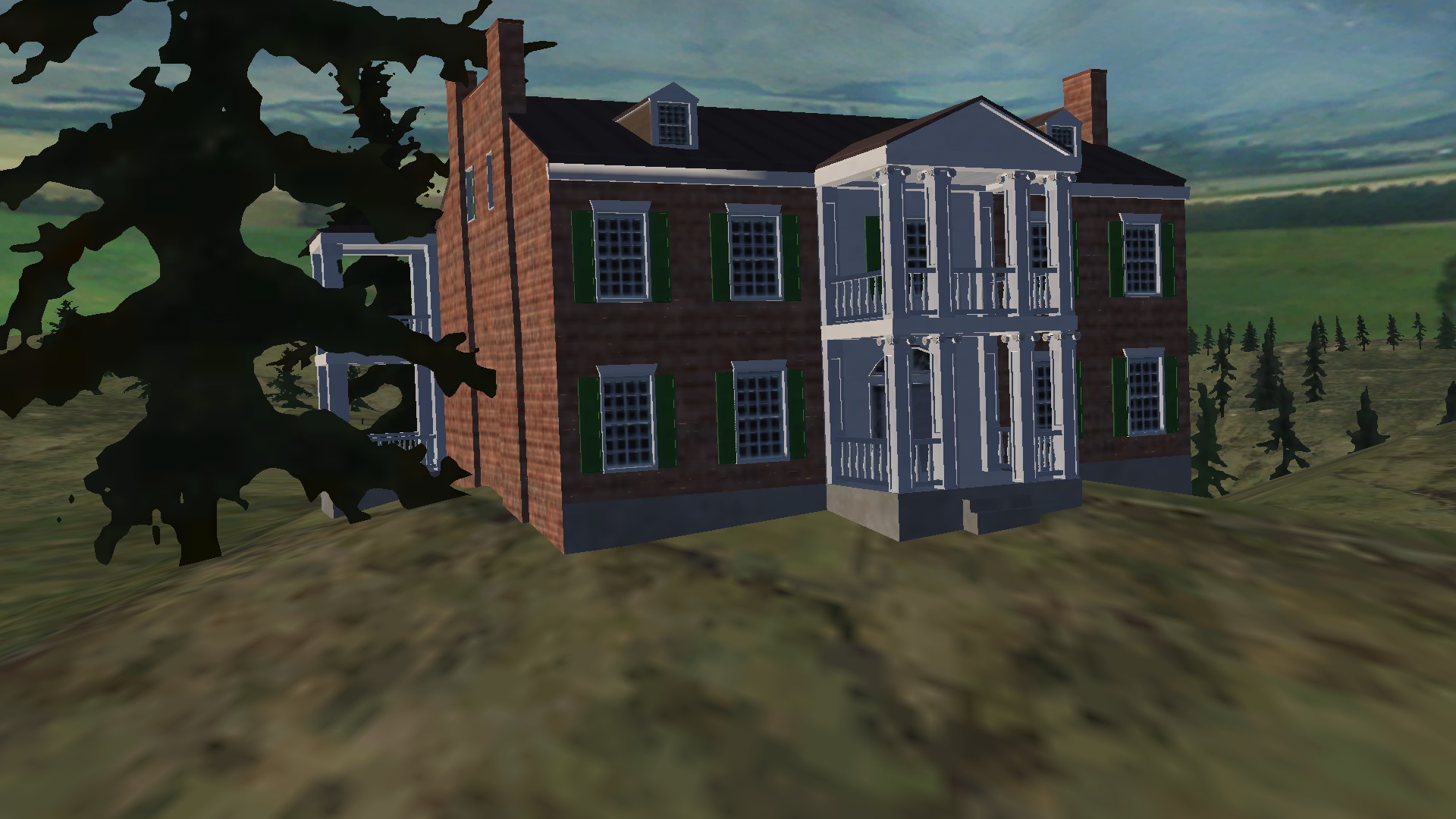
Randal McGavock served as Mayor of Nashville for a one-year term in 1824, was acquainted with President James K. Polk, and good friends with President Andrew Jackson; Jackson lived nearby at the Hermitage and was a guest of the McGavocks on more than one occasion. McGavock named his property near Franklin after his father's birthplace in County Antrim, Ireland. The name "Carnton" was derived from the Gaelic word cairn which means "a pile of stones." A cairn sometimes marks a burial site.
The first construction at Carnton was a smokehouse constructed in 1815 that was adjoined to the main house, which was built in 1826 using slave labor, by a two-story kitchen wing. The mansion sat on 1,400 acres, of which 500 acres was used for farming. The McGavocks were also involved in raising and breeding livestock and thoroughbred horses. Randal McGavock died in 1843, leaving Carnton to his son John. John McGavock was 46 when the Civil War began and was too old to enlist, but he helped outfit and organize groups of Confederate soldiers. John McGavock's wife, Carrie McGavock, contributed to the war effort by sewing uniforms for relatives and friends. As the war got closer to home, John McGavock sent most of his slaves to Louisiana so they wouldn't be taken by Federal authorities. When Union troops took control of Middle Tennessee, and learned of the McGavocks' efforts to aid the Confederacy, they took thousands of dollars worth of grain, horses, cattle and timber from his plantation.
After the Battle of Franklin, Carnton became the largest temporary field hospital for tending the wounded and dying. The home was situated less than one mile from the location of the activity that took place on the far Union Eastern flank. Four Confederate generals' bodies were laid out for a few hours after the battle on Carnton's back porch—Patrick Cleburne, John Adams, Otho F. Strahl and Hiram B. Granbury. The McGavock family tended for as many as 300 soldiers inside Carnton alone, though at least 150 died the first night. Hundreds more were spread throughout the rest of the property, including in the slave cabins. Carrie McGavock donated food, clothing and supplies to care for the wounded and dying, and witnesses say her dress was blood soaked at the bottom. Carrie's two children, Hattie (then nine years old) and Winder (then seven) witnessed the carnage as well, providing some basic assistance to the surgeons.
After the battle, on December 1st, Union forces under Major General Schofield evacuated toward Nashville, leaving all the dead, including several hundred Union soldiers, and the wounded who were unable to walk as well. The residents of Franklin were then faced with the task of burying over 2,500 soldiers, most of those being Confederates. All of the Confederate dead were buried as nearly as possible by states, close to where they fell, and wooden headboards were placed at each grave with the name, company and regiment painted or written on them. Over the next 18 months, many of the markers were either rotting or used for firewood, and the writing on the boards was disappearing. To preserve the graves, John and Carrie McGavock donated 2 acres of their property to be designated as an area for the Confederate dead to be re-interred. The citizens of Franklin raised the funding and the soldiers were exhumed and reburied in the McGavock Confederate Cemetery. The original names and identities of the soldiers were recorded in a cemetery record book by George Cuppett, who had taken responsibility for the reburials, and the book came into the possession of Carrie McGavock after the reburials.
After the war, John McGavock continued to farm Carnton under sharecropping arrangements with former slaves until his death in 1893. Listed on the National Register of Historic Places in 1973, Carnton has never received any funding or support from the local, state or Federal government. The site is maintained and managed by The Battle of Franklin Trust, a non-profit organization which also manages another historic Franklin home, the Carter House. Today, Carnton receives visitors from all over the world as an iconic landmark of the historic Franklin battlefield.
This structure in the mod is actually off-scene, because in reality it would have been in the background from this perspective on the battlefield. The map is not large enough to include Carnton directly on the scene.
Mechanicsville (Gaines' Mill)
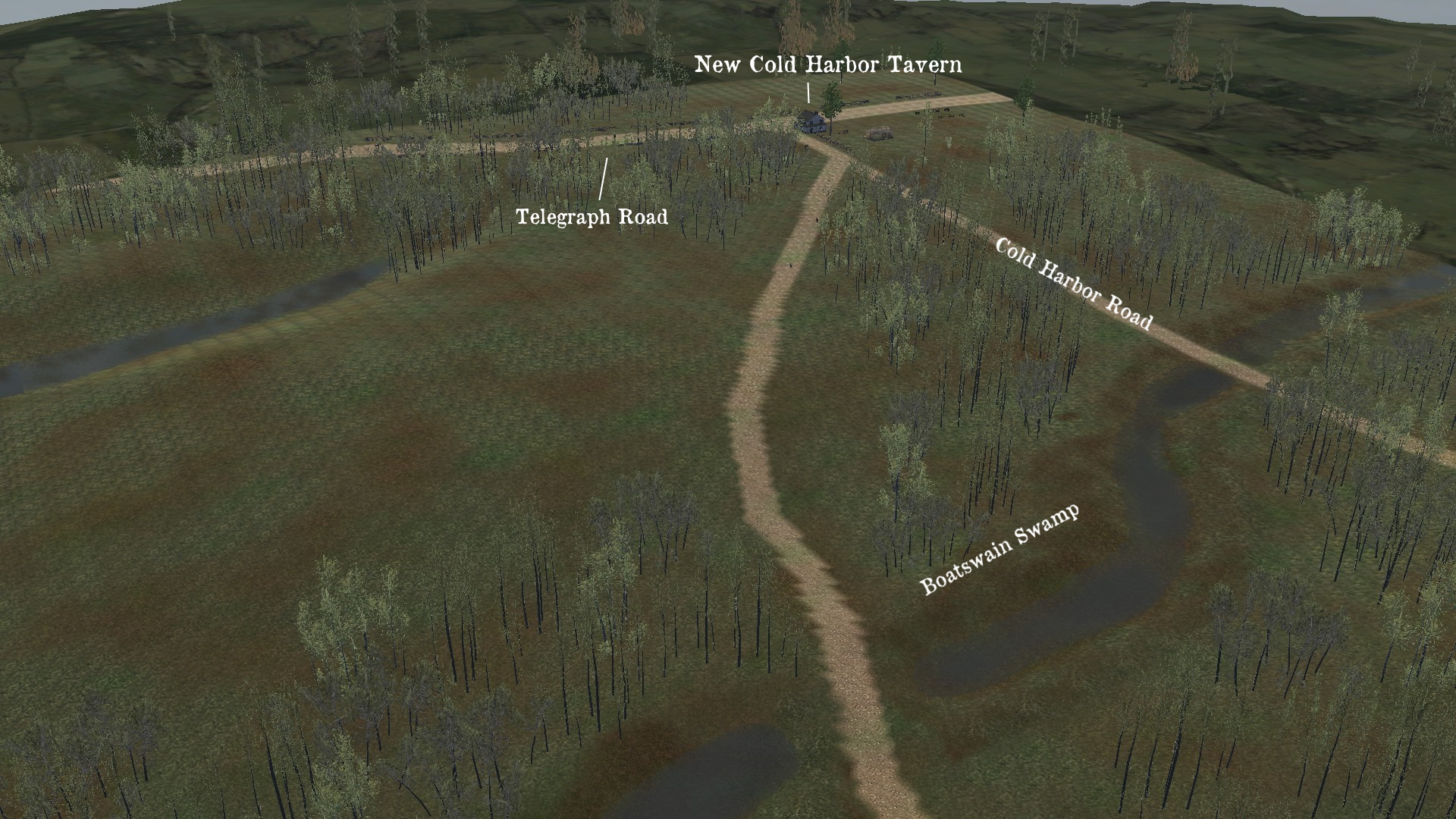
The Battle of Gaines' Mill, sometimes known as the Battle of Chickahominy River, was the third of the Seven Days Battles. Fought on June 27th, 1862, in Hanover County, Virginia as part of the Peninsula Campaign, Confederate General Robert E. Lee's army launched the largest Confederate attack of the war, made up of about 57,000 men in six divisions. Following the inconclusive Battle of Beaver Dam Creek (Mechanicsville) the previous day, General Lee renewed his attacks against the Union army's right flank, which was relatively isolated on the northern side of the Chickahominy River. Union Brigadier General Fitz John Porter's V Corps had established a strong defensive line there, behind Boatswain's Swamp. Porter's V Corps was reinforced and held fast for the afternoon as the Confederates attacked in a disorganized manner, suffering heavy casualties. Major General Thomas J. "Stonewall" Jackson's command was delayed in arriving on the field, preventing the full concentration of Confederate forces before Porter received reinforcements from the VI Corps.
The Confederates finally mounted a coordinated assault at dusk that broke Porter's line and drove his men back toward the Chickahominy River, and the Union troops retreated across the river during the night. The Confederates were too disorganized to pursue the main Union force. Gaines' Mill saved Richmond for the Confederacy in 1862; the tactical defeat there convinced the commander of the Army of the Potomac, Major General George B. McClellan, to abandon his advance on Richmond and begin a retreat to the James River. The battle occurred in almost the same location as the Battle of Cold Harbor nearly two years later.
Gaines' Mill was an intense battle, the largest of the Seven Days and the only clear cut Confederate tactical victory of the Peninsula Campaign. Union casualties from the 34,214 engaged were 6,837 (894 killed, 3,107 wounded, and 2,836 captured or missing), including Brigadier General John F. Reynolds who was captured by the Confederates while sleeping under a tree. Of the 57,018 Confederates engaged, losses totaled 7,993 (1,483 killed, 6,402 wounded, 108 missing or captured) including the loss of three brigade commanders and one general officer.
New Cold Harbor Tavern
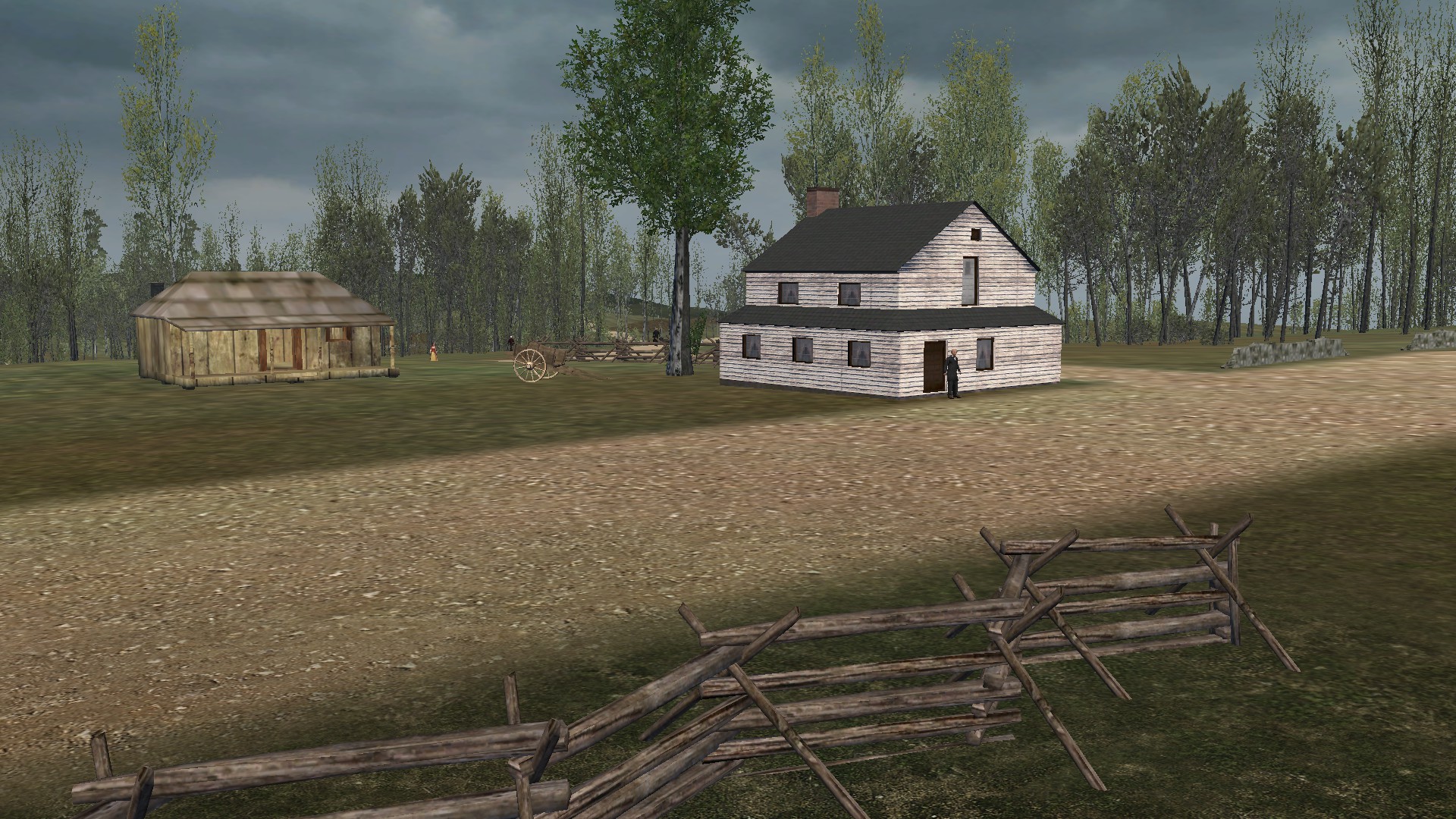
The New Cold Harbor Tavern is estimated to have been built prior to the Revolutionary War, and belonged to the Burnett family at the time of the Civil War. In addition to managing the building, they also farmed the surrounding 150 acres. In late May 1862, Union General George McClellan made his headquarters at the tavern, likely working from tents set up within the tavern yards. A month later, in late June 1862, Confederate forces had taken control of the crossroads. General Thomas “Stonewall” Jackson also made camp at the tavern and remained in the vicinity for the duration of the fighting that took place in the area. On the night of June 27th, 1862, following the Confederate victory at the Battle of Gaines’ Mill, Jackson and Confederate cavalry chief General J.E.B. Stuart reportedly slept beneath a tree in the tavern’s yard.
From May 31st – June 12th, 1864, combat raged across the tavern’s surrounding property in the Battle of Cold Harbor, with the climax of the battle occurring on it's 29 acre tract. Union General James B. Ricketts, who earned a medal for meritorious service during Cold Harbor, also made the tavern his headquarters at least once over the course of the battle. In the days following the Union defeat at Cold Harbor, General Winfield Scott Hancock oversaw the progress of the 2nd Corps from a spot near the tavern, a VI Corps physician set up a field hospital among the trees in the yard, and General Ulysses S. Grant himself stopped at the site on June 3rd while surveying the state of his army. The New Cold Harbor tavern burned down sometime in the 20th century, however the American Battlefield Trust continues its stewardship of the site and is developing plans for interpretation of the chaotic events that took place at the intersection of the battlefields of Gaines’ Mill and Cold Harbor.
Pea Ridge
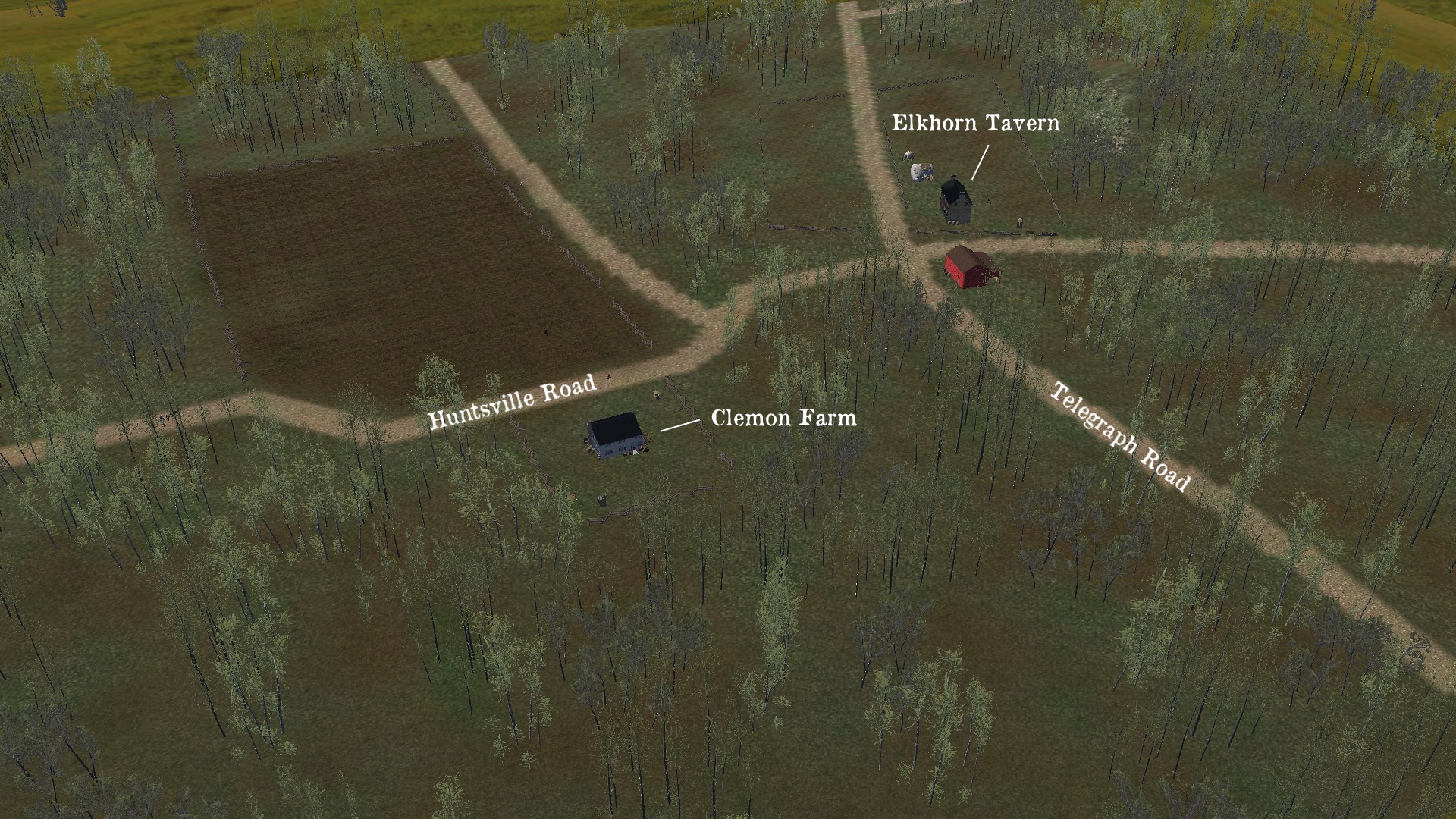
The Battle of Pea Ridge, also known as the Battle of Elkhorn Tavern, took place near Leetown, northeast of Fayetteville, Arkansas. The battle took place over a large area of ground over the course of two days, so this scene focuses on the action around Elkhorn Tavern. Please be aware that the landmark buildings on these scenes are not recreations of the real life structures, these are simply reused, placeholder models of buildings that already exist in the mod.
This battle was one of the few in which a Confederate army outnumbered Union forces. On March 7th, 1862, Confederate Major General Earl Van Dorn launched a counteroffensive, hoping to recapture northern Arkansas and Missouri. At around 9:30 a.m., Confederate Lieutenant Colonel James T. Cearnal's cavalry battalion bumped into a company of the 24th Missouri Volunteer Infantry in Cross Timber Hollow. Union Colonel Eugene A. Carr arrived at Elkhorn Tavern soon after with Colonel Grenville M. Dodge's brigade right behind him. Carr formed up his regiments facing north along the edge of the plateau near the Elkhorn Tavern, and pulled the 24th Missouri back to cover their left flank at the base of Big Mountain. The 1st Iowa Battery's four guns were then sent forward to slow the Confederate advance.
General Van Dorn, instead of rushing Carr's badly outnumbered force, became cautious and ordered General Sterling Price to fully deploy his division. When the Union cannons began firing, Van Dorn ordered his own artillery into action. Soon, 21 Southern guns were unloading on the Iowa gun crews. By the time Price's infantry finally began edging uphill toward the Union guns, they met Carr's men advancing downhill in an aggressive counterattack. The Confederate advance stalled near Elkhorn Tavern, but Confederate troops were marching up Williams Hollow further to the east to turn Carr's right flank.
Carr's second brigade, under the command of Colonel William Vandever, arrived at Elkhorn Tavern by 12:30 p.m. The Union division commander immediately launched this unit in a counterattack on Price's right flank. Superior Confederate numbers eventually forced Vandever to pull back a short distance uphill. Confederate Brigadier General Henry Little waved his 1st Missouri Brigade forward on his own initiative, and the Confederate advance began to roll uphill. Seeing this convinced Van Dorn to take more aggressive action. Van Dorn took tactical control of the Confederate right wing, while General Price, though wounded, remained in charge of his left wing. However more time was lost in reorganizing Price's division to attack, and while the Confederates were reorganizing, Union Brigadier General Samuel R. Curtis was rushing small units to Carr's assistance as quickly as he could. Carr himself was wounded in the ankle, neck and arm, but refused to leave the field. In 1894 he would be awarded the Medal of Honor for his actions this day.
Price's left wing emerged from Williams Hollow at about 4:30 p.m. and attacked Carr's line, outflanking him. On the right, Dodge's brigade collapsed after putting up a fierce fight at Clemon's farm. On the left, in equally hard fighting, Vandever's men were steadily pushed back to the tavern and beyond. In the center, Henry Little led his men forward into the teeth of Union artillery. After being forced back, Vandever's men finally halted the Confederate assault at Ruddick's field, over a quarter mile south of the tavern. There they were joined by Dodge's and Curtis' men, as well as part of Brigadier General Alexander S. Asboth's 2nd Division. At 6:30 p.m., Curtis launched a brief counter-attack, but soon recalled his men in the dark.
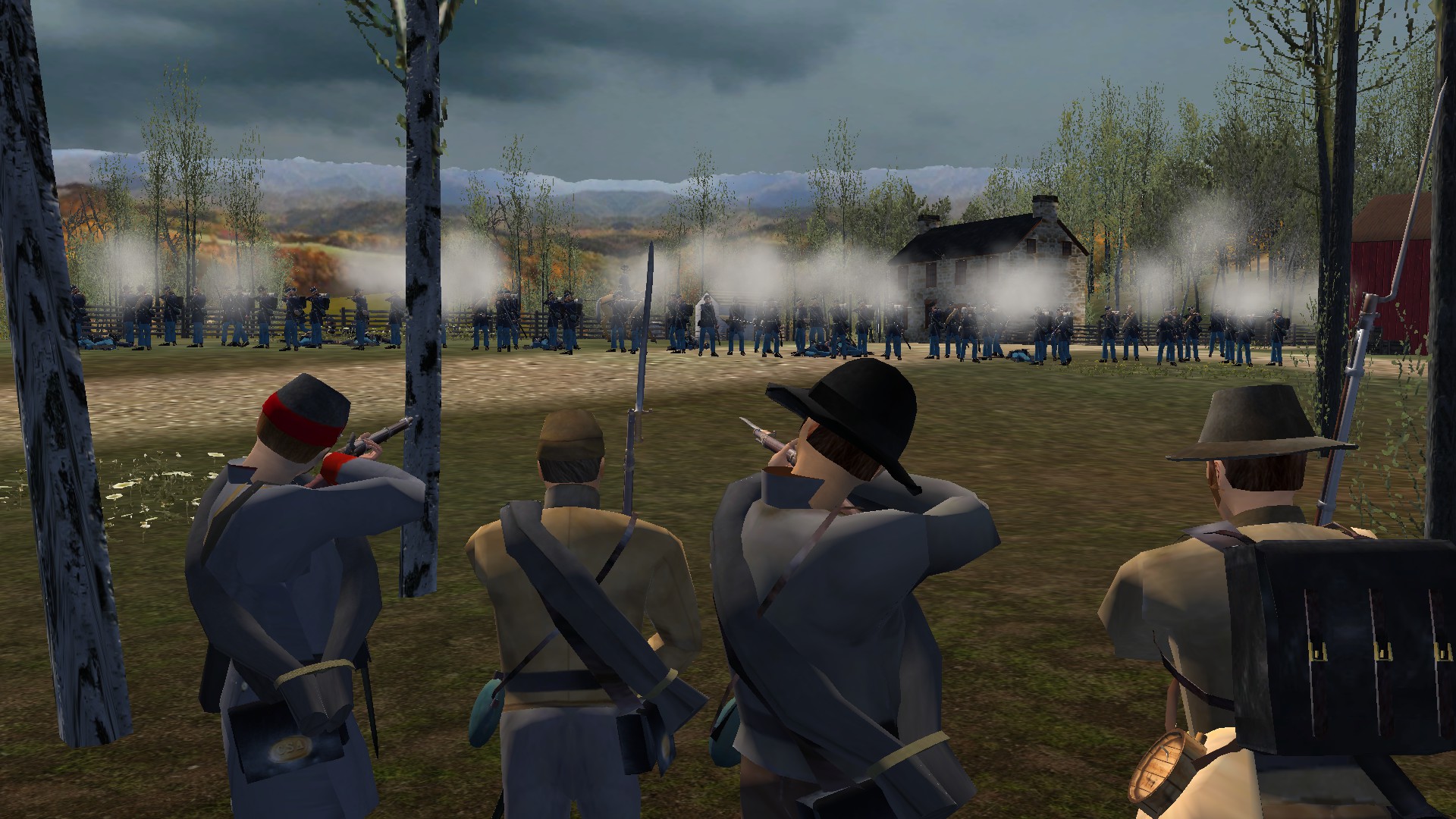
The next day, Union Brigadier General Franz Sigel's men extended in a long line to the left of Davis. By 8:00 a.m., Asboth's division took its place on the far left, then came Colonel Peter J. Osterhaus, Davis and Carr. It was possibly the only time during the war an entire army was visibly deployed in one continuous line of battle from flank to flank. Sigel now massed 21 cannons on the open knoll to the west of Elkhorn Tavern. With Sigel in personal control, the Union artillery began an extremely effective fire against the 12 Southern guns opposed to them. With the Confederate guns rendered severely depleted in strength, Sigel directed his gunners to fire into the woods at the Confederate infantry, near the base of Big Mountain. The projectiles created a deadly combination of rock shrapnel and wood splinters, driving the 2nd Missouri Brigade from its positions. It was one of the few times in the Civil War when a preparatory artillery barrage effectively softened up an enemy position and paved the way for an infantry assault.
Van Dorn found that his reserve artillery ammunition was with the wagon train, a six hour march away, so the Confederate commander reluctantly accepted that he had no hope of victory and decided to retreat via the Huntsville Road. At 10:30 a.m., Sigel sent his two divisions forward to attack. Van Dorn joined the retreat at about 11:00 a.m., and sometime around noon, Sigel's soldiers met Colonel Jefferson C. Davis' men near Elkhorn Tavern and a great cry of "Victory!" was sent up.
Overhauled City and Village Scenes
The last two unfinished city scenes in the mod, Pensacola and Cairo, have been completely overhauled! They are not exact replicas of the real life locations, but the basic layout of the city and the roads shaped how the scenes were created. They are more of a faithful, authentic recreation, that serves to be far more immersive than the old, unfinished scenes that still used medieval buildings and props from Native Mount & Blade.
Pensacola, Florida
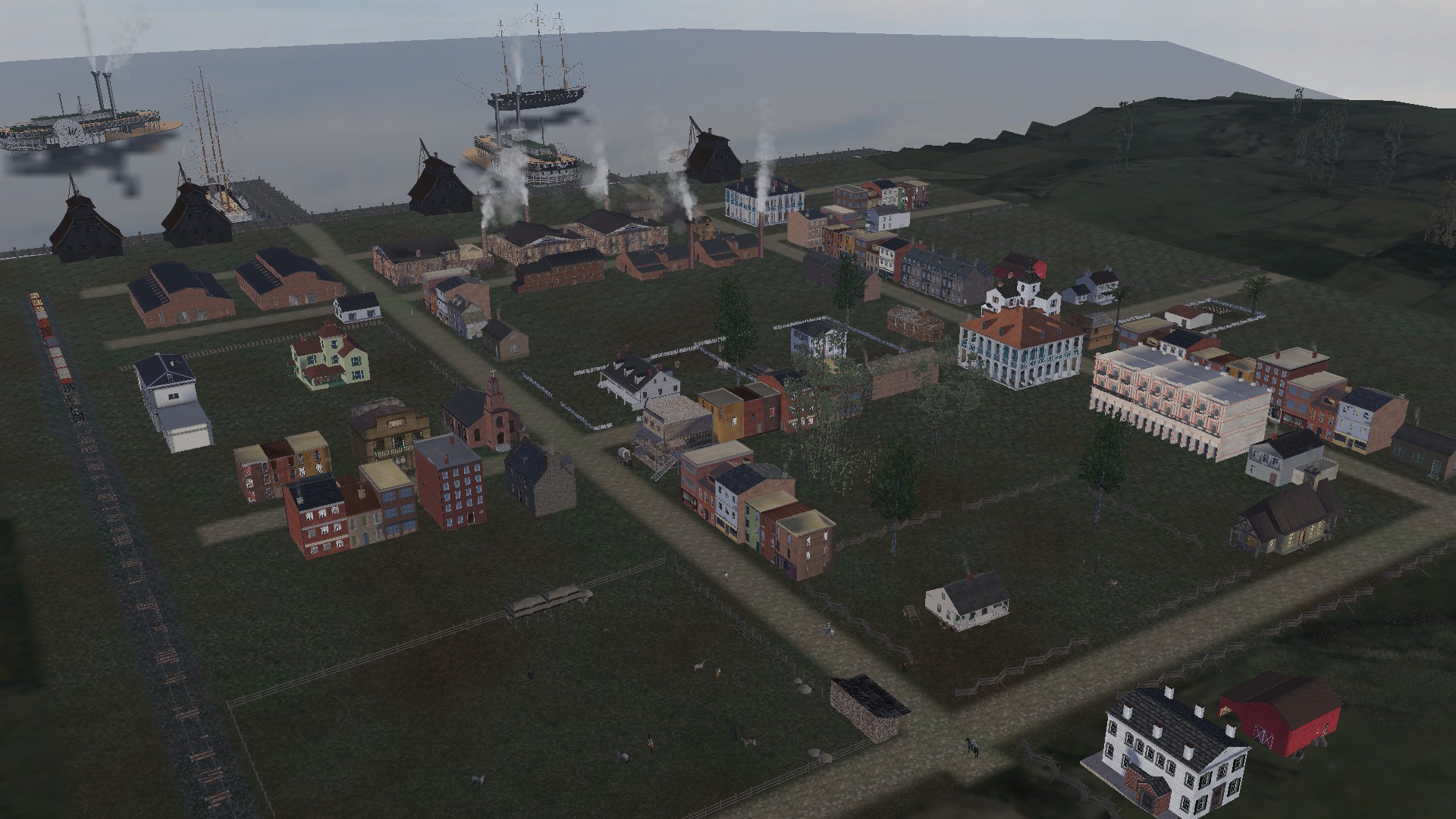
Pensacola is the site of the first Spanish settlement within the borders of the continental United States, founded in 1559, predating the establishment of St. Augustine by 6 years, although the settlement was abandoned due to a hurricane and not re-established until 1698. The area changed hands several times as European powers competed in North America. It's nickname, "The City of Five Flags", is in reference to the five governments that have ruled the city during its history; Spain, France, Great Britain, the United States of America, and the Confederate States of America. During the American Civil War, Confederate forces lost the nearby Battle of Santa Rosa Island in 1861, and Union forces subsequently failed to win the Battle of Pensacola. After the fall of New Orleans in 1862, the Confederacy abandoned Pensacola and it was occupied by the United States.
Quina House
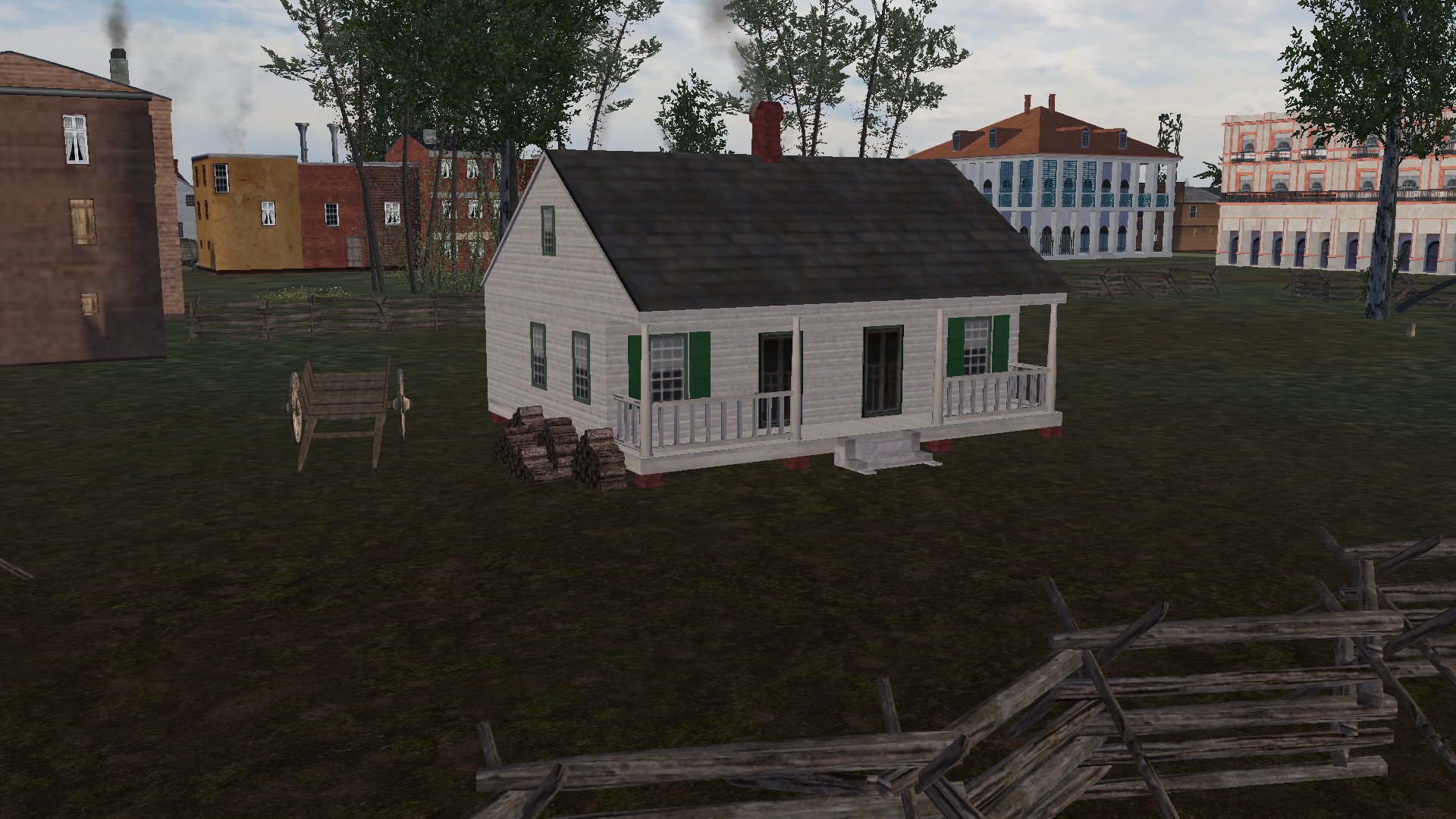
The earliest date of construction for the Quina house may go back as early as 1810, due to the absence of Spanish records of the period. However, the documented date of 1821 still makes it the oldest structure in Pensacola that is still located on its original site. Typical of Spanish buildings of that time period, the one-and-a-half story structure was built of local pine, cyprus, and oak resting on brick piers. The house features an apron roof with a double chimney of locally made brick. Originally there was a separate structure for the kitchen but it was later rotated and attached to the rest of the home in 1920. The Quina House is named for its earliest known resident, Desiderio Quina, who purchased the home in 1821 and operated a nearby apothecary. Today, the Quina House is a museum, owned and maintained by the Pensacola Historic Preservation Society, and the museum is furnished by artifacts from 1790 through the 1880's
Barkley House

The Barkley House, located on Pensacola Bay, is one of the oldest masonry houses in Florida, and it is the oldest surviving example of a High House in the city. George Barkley, a successful Pensacola merchant, built the house between 1825 and 1830 from bricks salvaged from Pensacola’s British fortifications. The Barkley family lived in the house through the 1950's. Today it is an integral piece of Historic Pensacola Village, part of the University of West Florida Historic Trust. Because of its beautiful grounds and spectacular view, it is today a popular venue for outdoor weddings and receptions.
Lavalle House
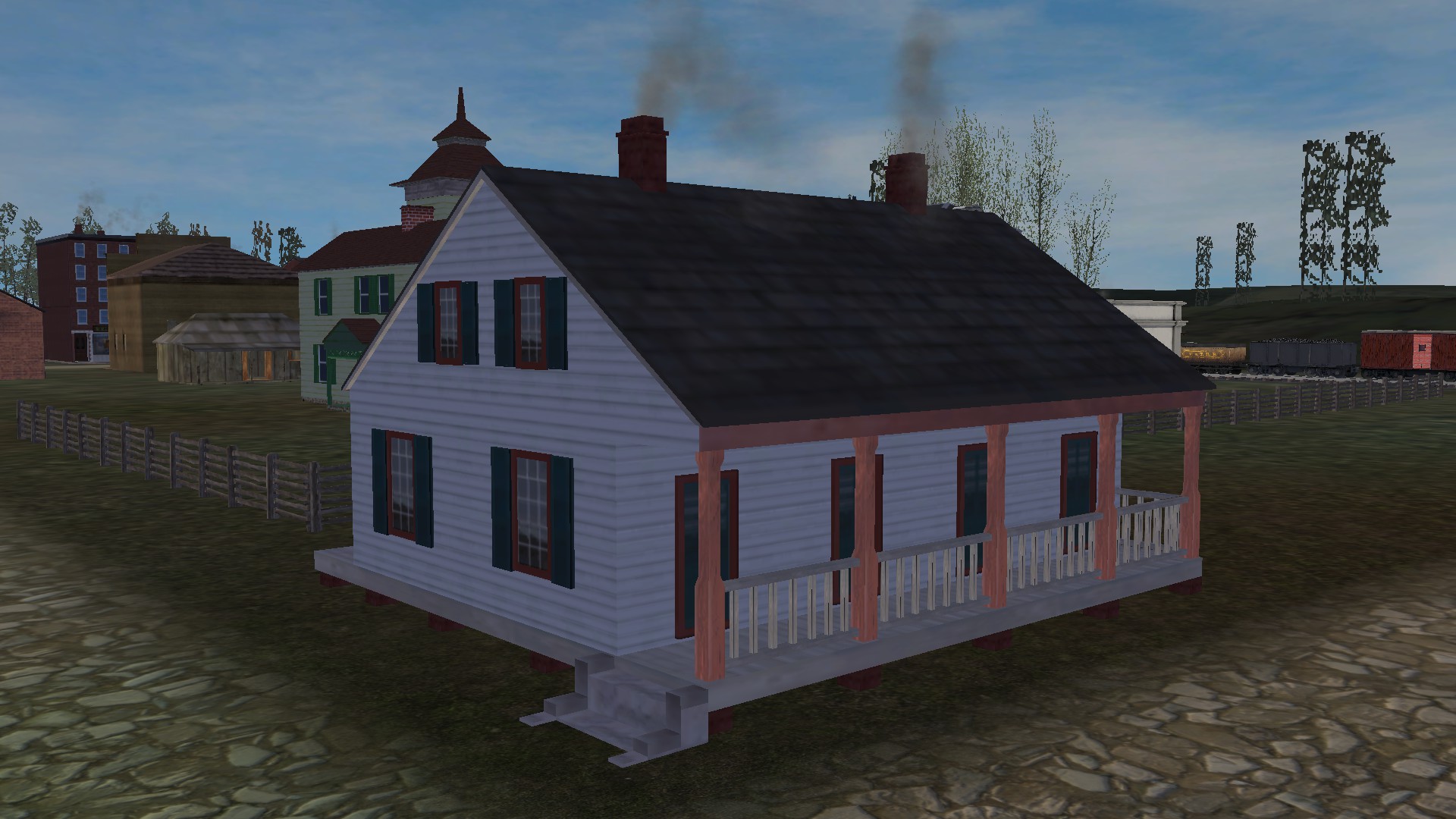
The Lavalle House was built by Charles Lavalle around 1805 and features a French Creole period style. It is one of the oldest houses in Pensacola and one of the few structures that remain from Spanish Florida. Lavalle built the house as a two-unit rental dwelling, or duplex, but he probably never lived there. Some time after he sold the house in 1815, it was converted into a single family home. In 1854, when Lavalle died, he owned 25 different properties.
Cairo, Mississippi
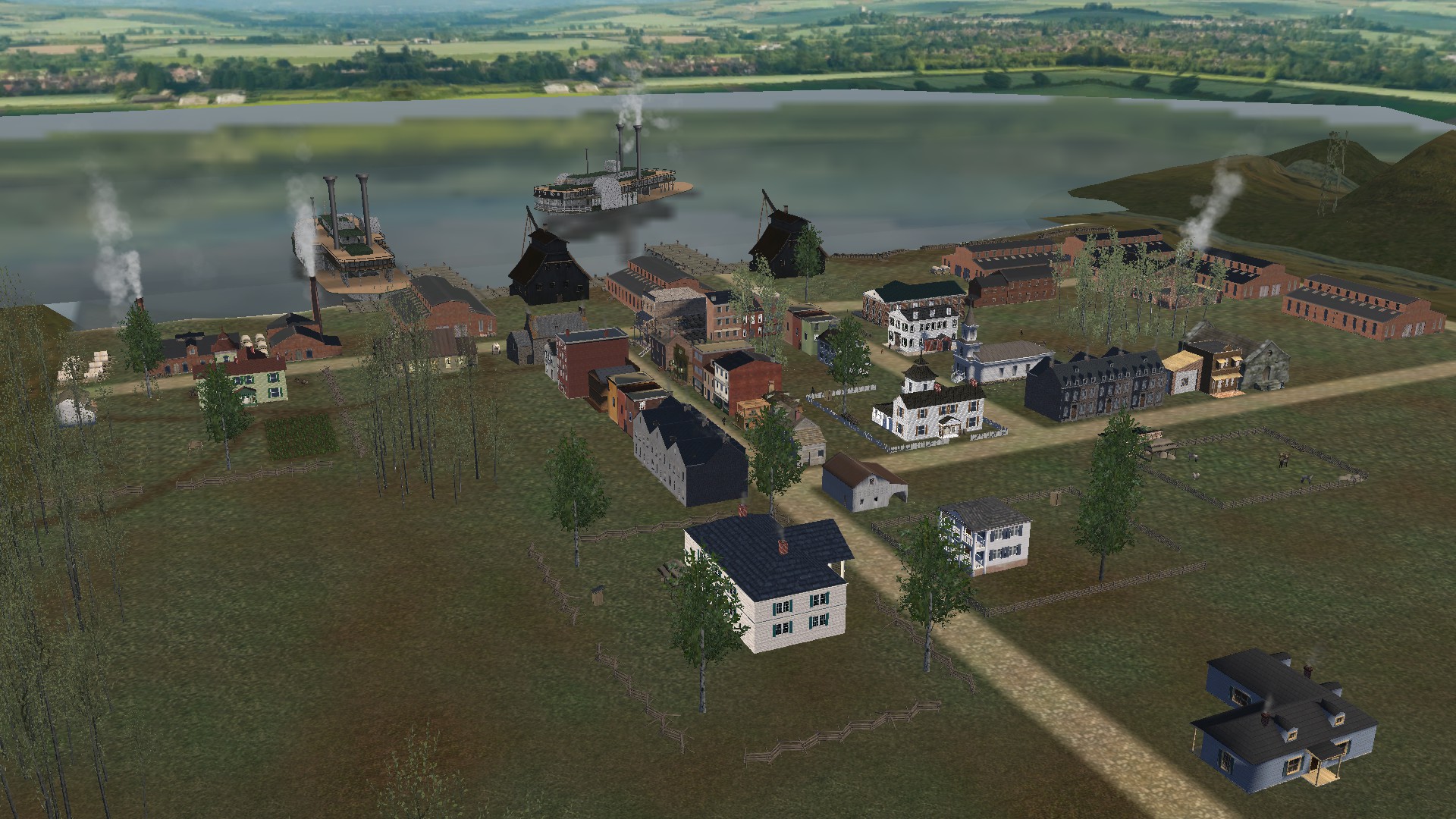
Cairo is the southernmost city in Illinois and is located at the confluence of the Ohio and Mississippi rivers. Fort Defiance was built here in 1862 by Union General Ulysses S. Grant to control strategic access to the rivers, as well as launch and supply his successful campaigns in the South. Charles Dickens visited Cairo in 1842, and was unimpressed. The city would serve as his prototype for the nightmare City of Eden in his novel, "Martin Chuzzlewit". Cairo was also the original destination for Huck and Jim in Mark Twain's, "The Adventures of Huckleberry Finn", as they planned to paddle up the Ohio River to obtain freedom for Jim. They drifted past Cairo by mistake and ended up in the slave state of Arkansas instead. Twain also noted Cairo in his non-fiction work, "Life on the Mississippi".
Cairo had been growing as an important river port for steamboats, which traveled all the way south to New Orleans. The city had been designated as a port of delivery by Act of Congress in 1854. A new city charter was written in 1857, and Cairo flourished as trade with Chicago to the north spurred development. By 1860, the population of the city exceeded 2,000.
In September 1861, Admiral Andrew Hull Foote made Cairo the naval station for the Mississippi River Squadron. Since Cairo had no land available for base facilities, the navy yard repair shop machinery was afloat aboard wharf-boats, old steamers, tugs, flat-boats, and rafts. After General Grant occupied the city and built Fort Defiance, Cairo became an important Union supply base and training center for the remainder of the war. Military occupation caused much of the city's trade to be diverted by railroad to Chicago. Cairo failed to regain this important trade after the war, as more railroads converged on Chicago and it developed at a rapid pace. Agriculture, lumber, and sawmills then began to dominate the economy of Cairo.
The strategic importance of Cairo's geographic location during the Civil War sparked prosperity in the town. Several banks were founded during the war years, and the growth in banking and steamboat traffic continued after the war.
The villages you will see previewed below were also completely overhauled because their old scenes were unsalvageable and needed to be scrapped and redone entirely. Hapers Ferry especially deserved to have a proper scene that was more authentic to it's historical appearance. A number of other village scenes that aren't previewed here have been improved with new buildings, props, etc., and you can see a list of them all in the changelog. As time goes on, more village scenes will be updated, or also scrapped and remade if necessary, but this will still take a while due to the large number of villages in the game.
Harpers Ferry
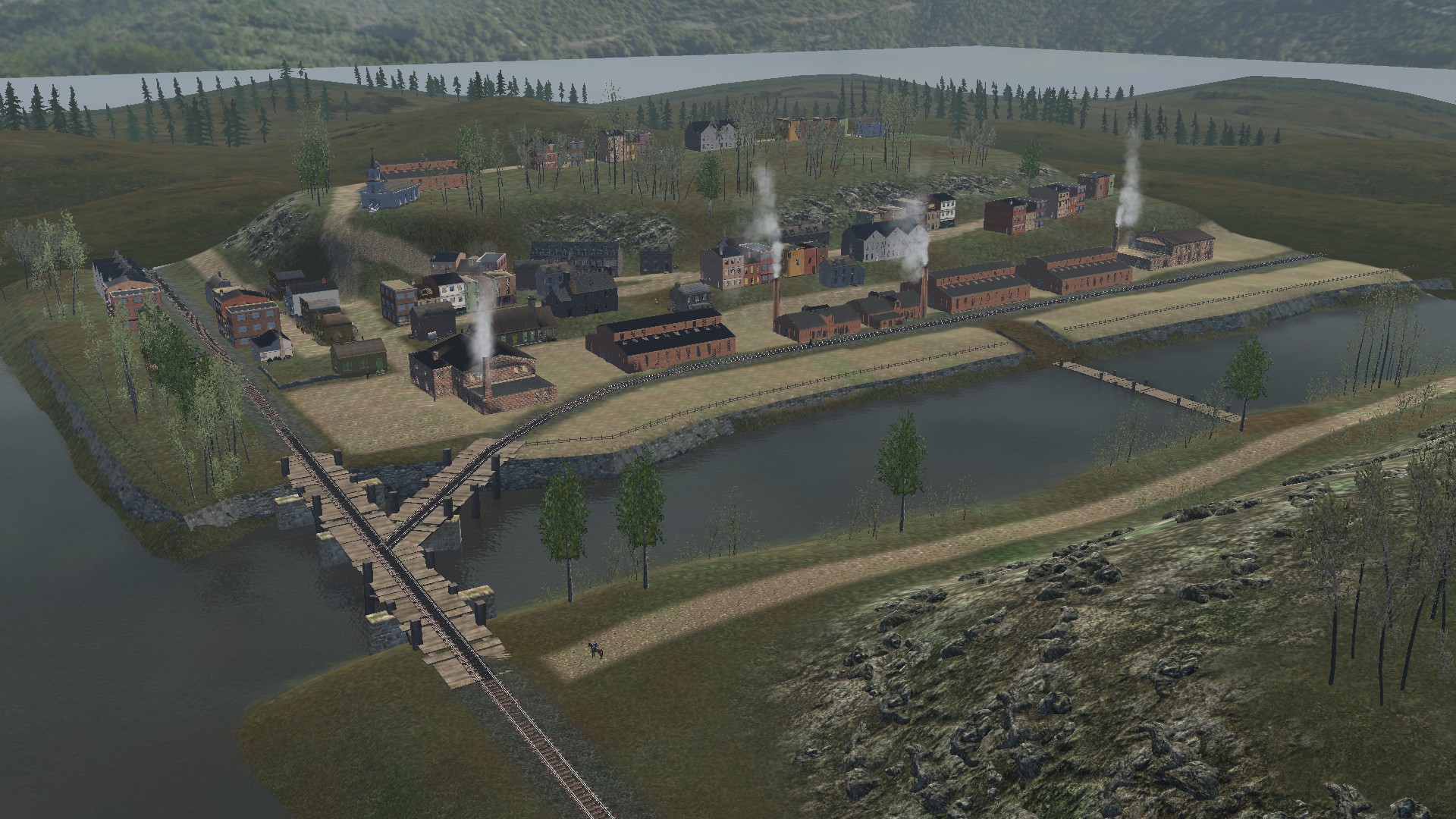
The town of Harpers Ferry was formerly spelled "Harper's Ferry" with an apostrophe, because in the 18th century it was the site of a ferry service owned and operated by Robert Harper. Prior to the Civil War, Harpers Ferry was a manufacturing town as well as a major transportation hub. By far, the most important event in the town's history was John Brown's raid on the Harpers Ferry Armory in 1859.
During the Civil War, Harpers Ferry was a natural conduit for Union incursions into the South. The war itself was disastrous for Harpers Ferry, which changed hands eight times between 1861 and 1865. A witness described the state of the city in March 1862:
"Harper's Ferry presents quite a gloomy picture. The best buildings have been shelled to the ground, and nothing now remains but their foundations to mark the spot where they once stood. The old Arsenal has been burnt to the ground; that part of the building where old John Brown made such a fatal stand, still stands as a monument to his memory. Before the destruction of the town, it contained near 3000 inhabitants, but at the present time there are not more than 300 or 400 families there."
Inspired by John Brown, both runaway and freed slaves came to Harpers Ferry during and after the Civil War. This created social tensions between white and black residents of the community and generated a growing need for services for the increasing African American population. Accordingly, a freedman’s school was opened on Camp Hill by Freewill Baptist missionaries following the Civil War.
Rome, New York
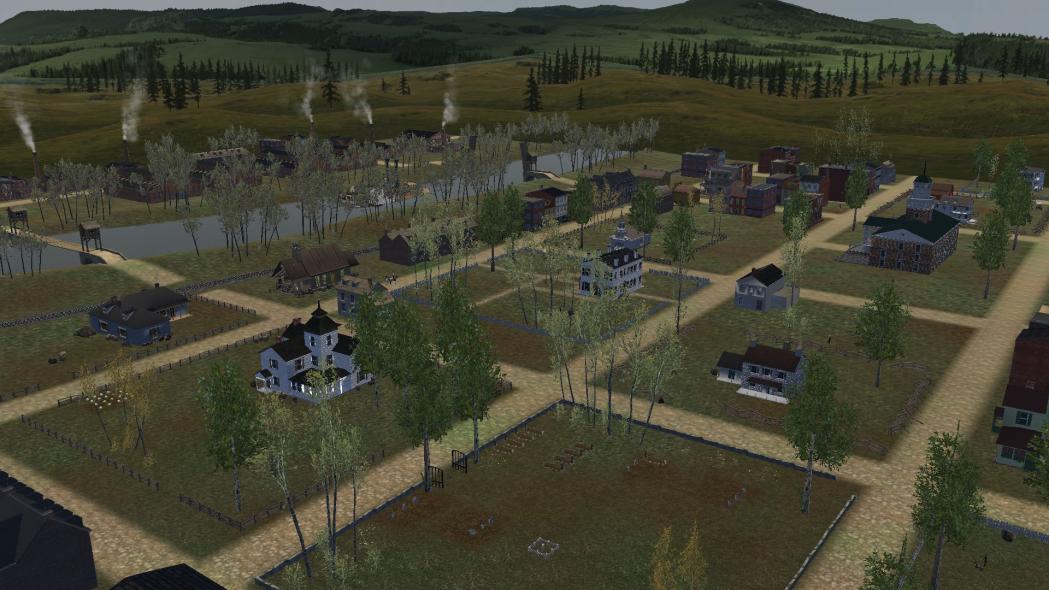
The city developed at an ancient portage site of Native Americans, including the Iroquois nations. This portage continued to be strategically important to European settlers, who also used the main 18th and 19th-century waterways that connected New York City and the Atlantic Ocean to the Great Lakes. The original European settlements developed around fortifications erected in the 1750's to defend the waterway, in particular the British Fort Stanwix. Following the American Revolution, the settlement began to grow with the construction of the Rome Canal in 1796, to connect Wood Creek (leading from Lake Ontario) and the headwaters of the Mohawk River.
The critical American trade route through the frontier was improved by construction of the Erie Canal. On July 4th, 1817, construction on the canal began in Rome. The Erie Canal reaches a summit in Rome, attaining an elevation of 420 feet. The first phase was completed in 1825, connecting the Hudson River by waterway to the Great Lakes. It resulted in an increase in trade and traffic between communities around the Great Lakes and New York City, stimulating development all along the route.
The first cheese factory in the United States was founded at Rome In 1851 by Jesse Williams, who also developed the process used today for large-scale cheese manufacturing. During the later 19th century, there were numerous dairy farms in the area and throughout the Mohawk Valley. Many shipped their milk and cheese to customers in New York City.
New Weapons
Colt Revolving Rifle
The Colt New Model Revolving rifles were early repeating rifles produced from 1855 until 1864. The design was similar to revolver type pistols, with a rotating cylinder that held five or six rounds. They were used to a limited extent on the Pony Express, and made a brief appearance in the American Civil War, being the first repeating rifles adopted by the U.S. government. However, the rifles were generally disliked by soldiers, and were ultimately discontinued due to serious design flaws. The principal problem was that gunpowder would sometimes leak from the paper cartridges in field conditions, lodging in various recesses around the firing cylinder. Hot gas leaking from the gap between the firing cylinder and the barrel would ignite this powder, which would in turn, ignite all of the powder in the chambers waiting to be fired. This is known as a "chain fire" and was a relatively common failure with early percussion revolving firearms. When this happened with the Colt Revolving Rifle, a spray of metal would be sent forward into the left arm and hand of the user.
Commanders attempted to get around the problem in a number of ways, and despite the problems with the weapon, it performed superbly in combat, seeing action with the Union 21st Ohio Volunteer Infantry at The Slaughter Pen while covering the withdrawal of Jon Millers Brigade during the Battle of Murfreesboro, and Snodgrass Hill during the Battle of Chickamauga. The volume of fire from this weapon proved to be so high that the Confederate forces were convinced that they were attacking an entire division, not just a single regiment. However the Ohio troops eventually ran out of ammunition, and were forced to surrender. Despite these victories, the rifle's faults would prove fatal for the weapon. A board of officers evaluated the evidence and decided to discontinue its use.
Morse Carbine
The Morse carbine was an innovative breech loading design, made at the South Carolina State Military Works in Greenville, South Carolina. Of the approximate one thousand Morse Carbines manufactured, this is the standard model, typically known as a Morse Type 3 Carbine. Types 1 & 2 have minor differences, externally noted in the style of the latch. G.W. Morse, a nephew of Samuel Morse, inventor of the telegraph, was granted a patent in 1856 for his breech loading carbine and cartridge design. This design was tested and implemented by the U.S. military prior to the Civil War, however the only large scale production of Morse carbines were the 1,000 carbines manufactured in Greenville in 1864, and the Confederate economy was unable to support the production and issuance of the proprietary centerfire cartridge. Only 60 were produced before the Civil War broke out, with Samuel Morse siding with the Confederacy and resuming production in fits and starts as the war forced the factory to repeatedly move. These guns were used by South Carolina State Troops late in 1864 until the end of the Civil War.
M1819 Hall Rifle
The M1819 Hall rifle was a single-shot breech-loading rifle, considered something of a hybrid breech and muzzle-loading design. Designed by John Hancock Hall, and patented on May 21st, 1811, the rifle was adopted by the U.S. Army in 1819. As part of the process, Hall built his own shops and machinery at Harpers Ferry, and along with inventing this weapon, he invented many machines, paving the way for uniform manufacturing of weapons with interchangeable parts. The ruins of his shops are still visible today. Thousands of rifles were made, though the troops and many leaders preferred the simplicity and lower costs of muzzle-loaded weapons. The Hall rifles were used in conflicts with Native Americans, and in other smaller conflicts as well. Some saw service in the American Civil War, but by this time many of the rifles were worn out over 30 years of use. Many of the lessons learned by Hall would benefit designers of the next generation of breech-loading firearms such as the Sharps rifle, Spencer carbine, and others.
Whitney Navy Revolver
The Whitney Revolver was a percussion lock revolver, designed by Fordyce Beal (who would also go on to develop the Remington 1858 Revolver) and developed at the Whitneyville Armory by the Whitney Arms Company, after Samuel Colt's U.S. patent over firearms using revolving cylinders ended. A total of just under 33,000 Whitney revolvers were produced prior to and during the American Civil War, with some being used on both sides through both government and private purchases. The majority of the 33,000 Whitneys were issued to New Jersey regiments and the U.S. Navy, while officers from across the Union purchased their own Whitney revolvers. A limited number of early production Whitneys may have been used by the Confederate States.
Spiller & Burr Revolver
The Spiller & Burr Revolver was born of a need for the South to arm itself. James H. Burton, superintendent of the Richmond Armory, received a commission as Lieutenant Colonel in the Confederate army in December 1861 and was tasked with ensuring that Confederate soldiers were well armed. He partnered with Edward N. Spiller and David J. Burr, two wealthy Virginia businessmen, to found the private manufacturing firm of Spiller & Burr. The .36 caliber Spiller & Burr Revolver was modeled after the Whitney Revolver with only a few minor adjustments, and was adopted as the standard revolver of the Confederate Government. While Spiller & Burr’s contract called for 15,000 copies, material shortages as a result of the Union naval blockade allowed only 1,451 revolvers to be manufactured.
Volcanic Pistol
The original 1848 Volcanic repeating design created by Walter Hunt was revolutionary, introducing an early iteration of the lever action repeating mechanism and the tubular magazine still common today. Lewis Jennings patented an improved version of Hunt's design in 1849, and Horace Smith was also hired by Courtlandt Palmer to improve the Jennings Rifle, patenting the Smith-Jennings in 1851. In 1854, partners Horace Smith and Daniel B. Wesson joined with Courtlandt Palmer, the businessman who had purchased the Jennings and Smith-Jennings patent rights, and further improved on the operating mechanism, developing the Smith & Wesson Lever pistol, and a new Volcanic cartridge. Originally using the name "Smith & Wesson Company", the name was changed to "Volcanic Repeating Arms Company" in 1855, with the addition of new investors, one of which was Oliver Winchester, who would later become the inventor of the famous Winchester rifle. The Volcanic Repeating Arms Company obtained all rights for the Volcanic designs (both rifle and pistol versions were in production by this time) as well as the ammunition, from the Smith & Wesson Company. While the Volcanic Repeating Arms Company was short-lived, only producing firearms from 1855 - 1856, its descendants, Winchester Repeating Arms Company and Smith & Wesson, became major firearms manufacturers.
Moore Teat-Fire Cartridge Revolver
In 1851 gunsmith Daniel Moore started a firearms business in Brooklyn, New York, and on November 30th, 1861, he incorporated Moore’s Patent Fire Arms Company. That same year, Moore began manufacturing a seven-shot, single-action, .32-caliber rimfire “belt” revolver. The Moore was a bit smaller than the Colt Navy, and its .32-caliber rimfire cartridges were readily available. What makes it unique is its swing-out cylinder design, which was the first commercial revolver in the U.S. to use this mechanism. A latch on the back of the frame released the entire barrel and cylinder assembly, allowing it to tip over, and exposing the chambers for loading and unloading.
The "Teat-fire" cartridges were a unique design that did not have a rim at the back like conventional cartridges, but were rounded at the rear, with a small "teat" that would protrude through a tiny opening in the rear of the cylinder. The primer was contained in the "teat" and when it was struck by the hammer, the cartridge would fire. Thus, it was akin to a rimfire cartridge, but instead of having priming all the way around the edge of the rim, it is centrally located in the "teat". It was an instant hit during the Civil War and on the frontier, where cap-and-ball revolvers still dominated. Moore’s revolvers were popular with New Yorkers heading off to the Civil War, and nearly 8,000 copies were made. All of the Moore Patent Revolvers were made with an engraved frame in dozens of variations.
The seven-shooter’s shelf life was short-lived, however. Moore’s design had violated Smith & Wesson’s exclusive control of inventor Rollin White’s patent rights to manufacture cartridge revolvers with bored-through chambers. Smith & Wesson won a judgment against Moore, who was forced to pay his competitor a royalty on each of the last 1,000 seven-shooters he made. Moore ultimately ceased production of the gun in 1863.
Union War Cry

In our last update for the mod, we revealed the introduction of the rebel yell as a player ability, and as many of you had wished, we were able to add a new war cry for the Union factions. Please be aware that the player will not give a war cry if they are not a member of a faction. In the following video, we will preview the new Union war cry ability being used in action.
That's all for this update! You can read the changelog on the download page, or the one provided with the mod package, to see a full list of everything that has changed. Many things are simple tweaks, adjustments, or additions, so in the interest of keeping this article from going on too long, I leave it up to you to explore the mod further. You may also flip through our gallery of new screenshots, which will include previews of some other things not covered in this article, as well some nice gameplay photos.
If you experience any problems with the mod that we haven't caught yet, do not hesitate to leave a comment here on the Moddb page, or on the mod's Discord, and I or someone else in the community will try to do our best to help you. This project has been a true labor of love, myself and everyone who has helped along the way have put a lot of heart and soul into it. We hope you all enjoy playing the mod as much as we enjoyed making it.
"Give them the bayonet! And when you charge, yell like furies!"
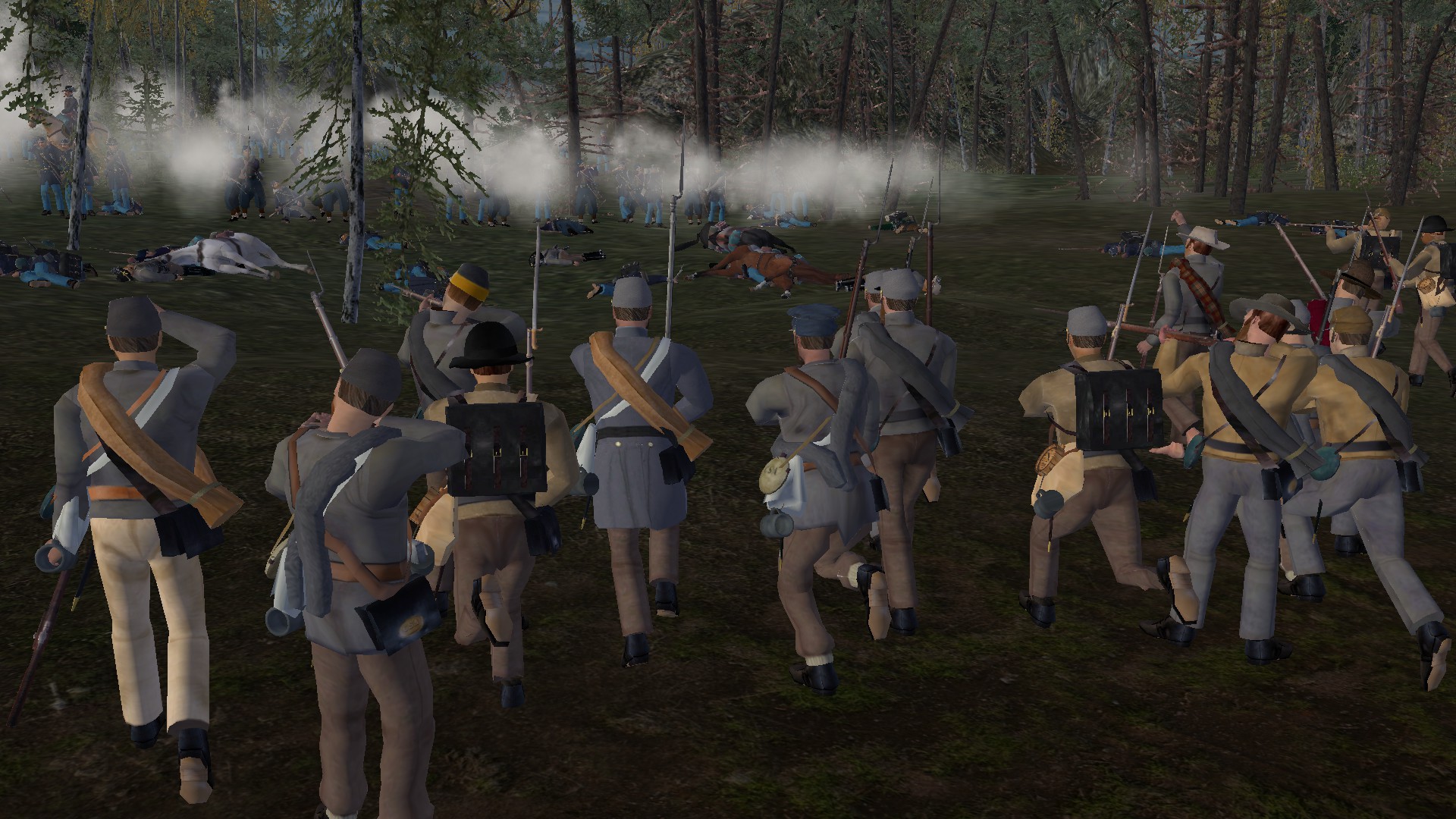

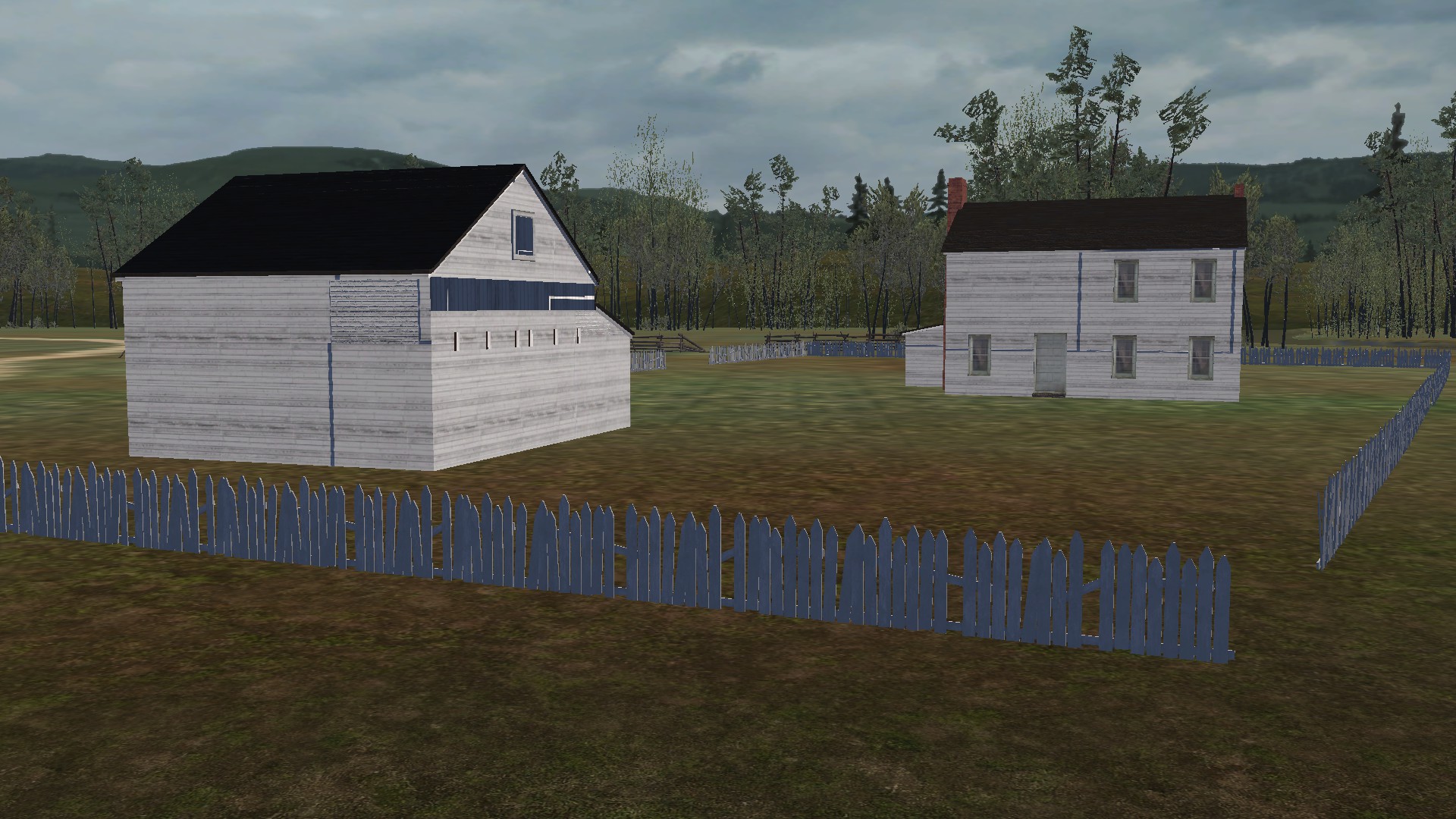

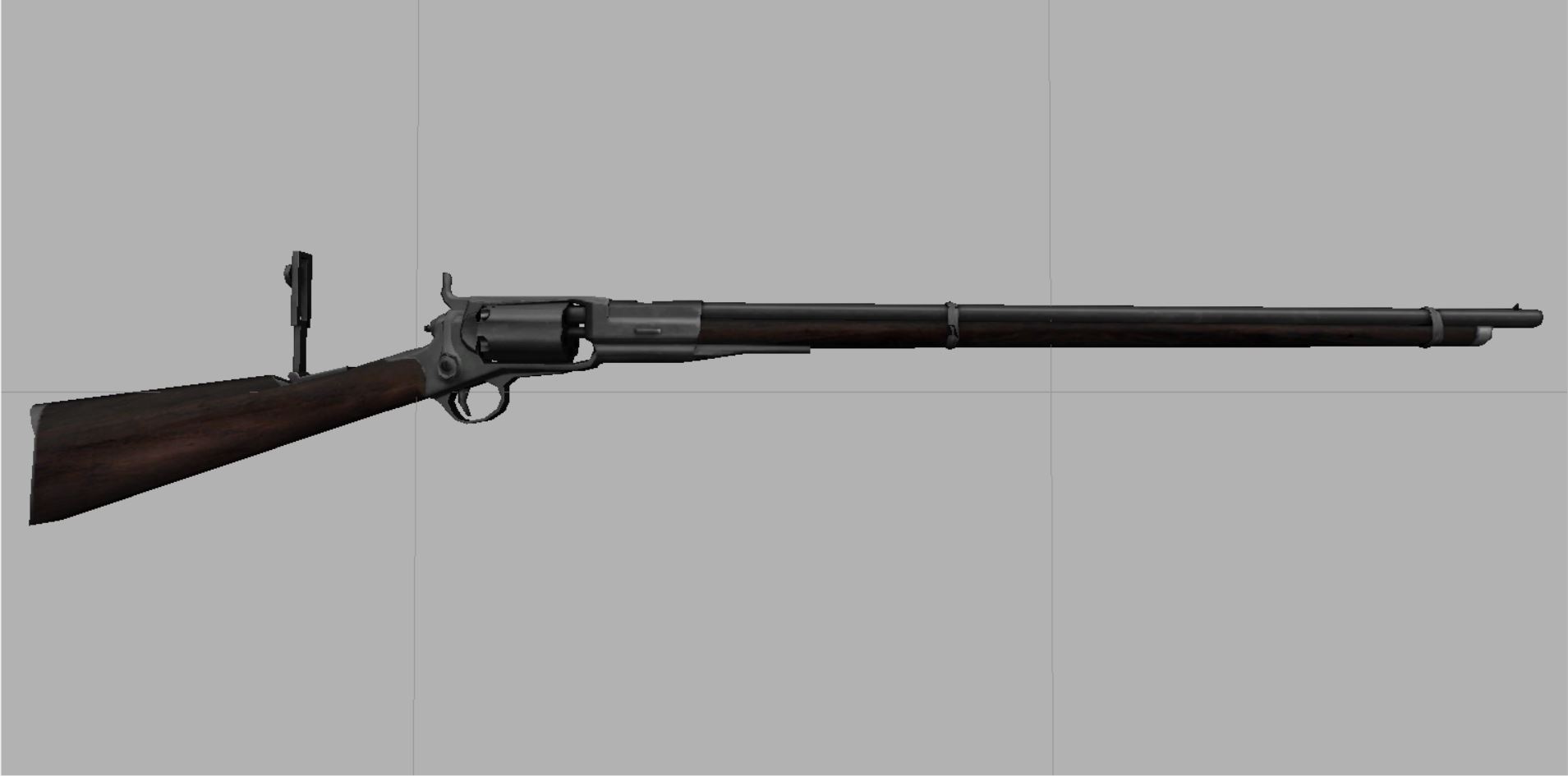
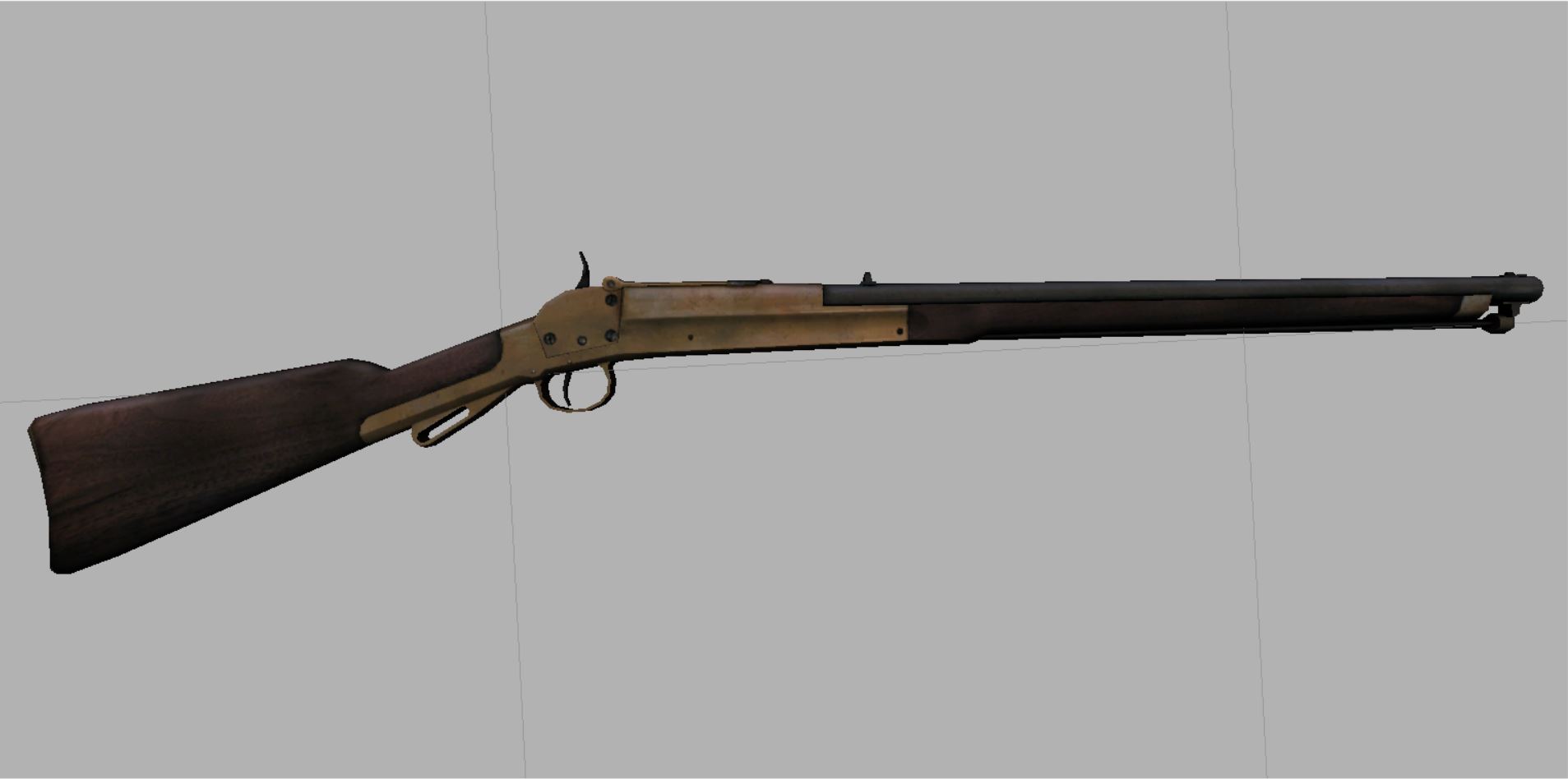
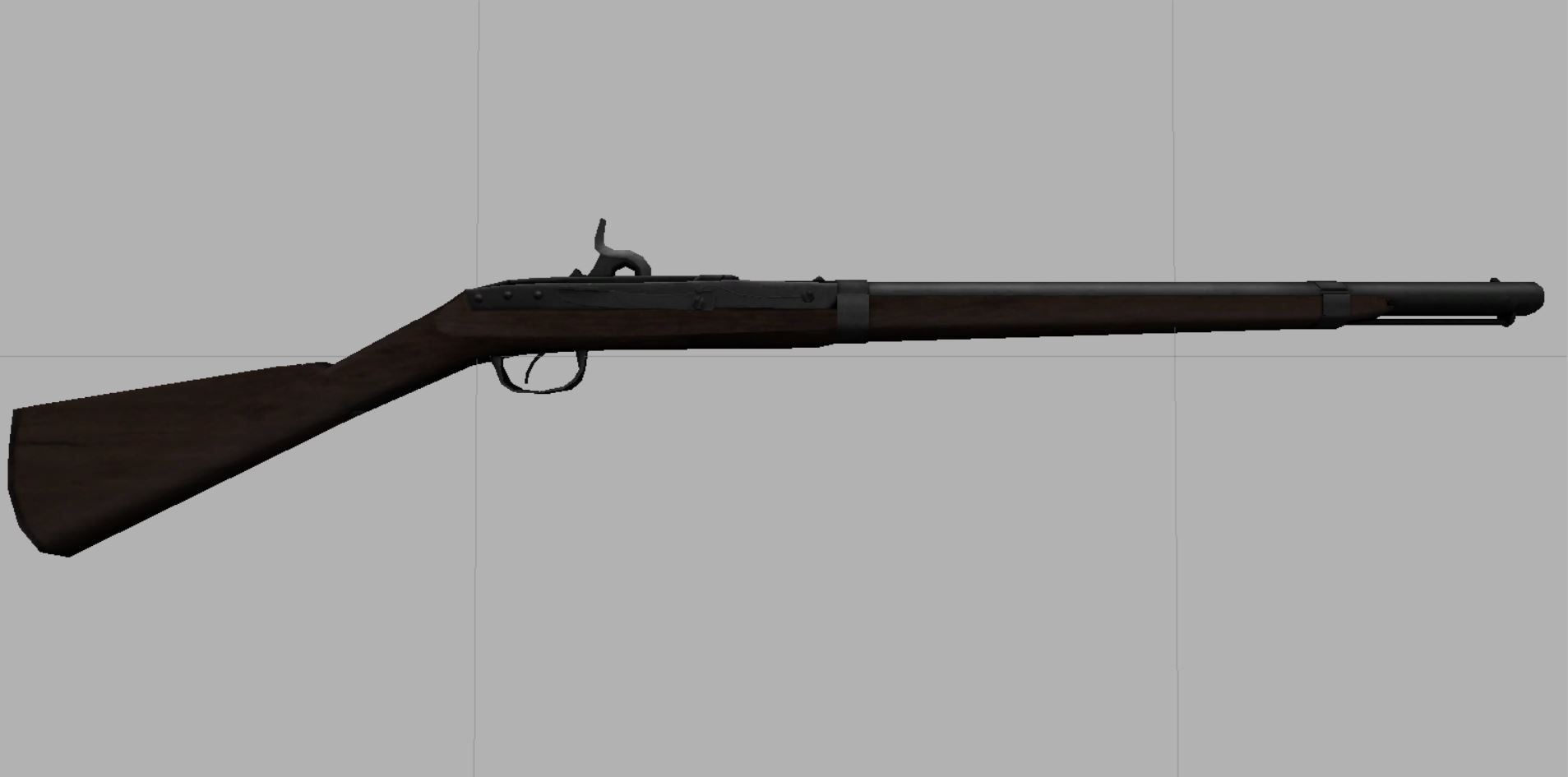
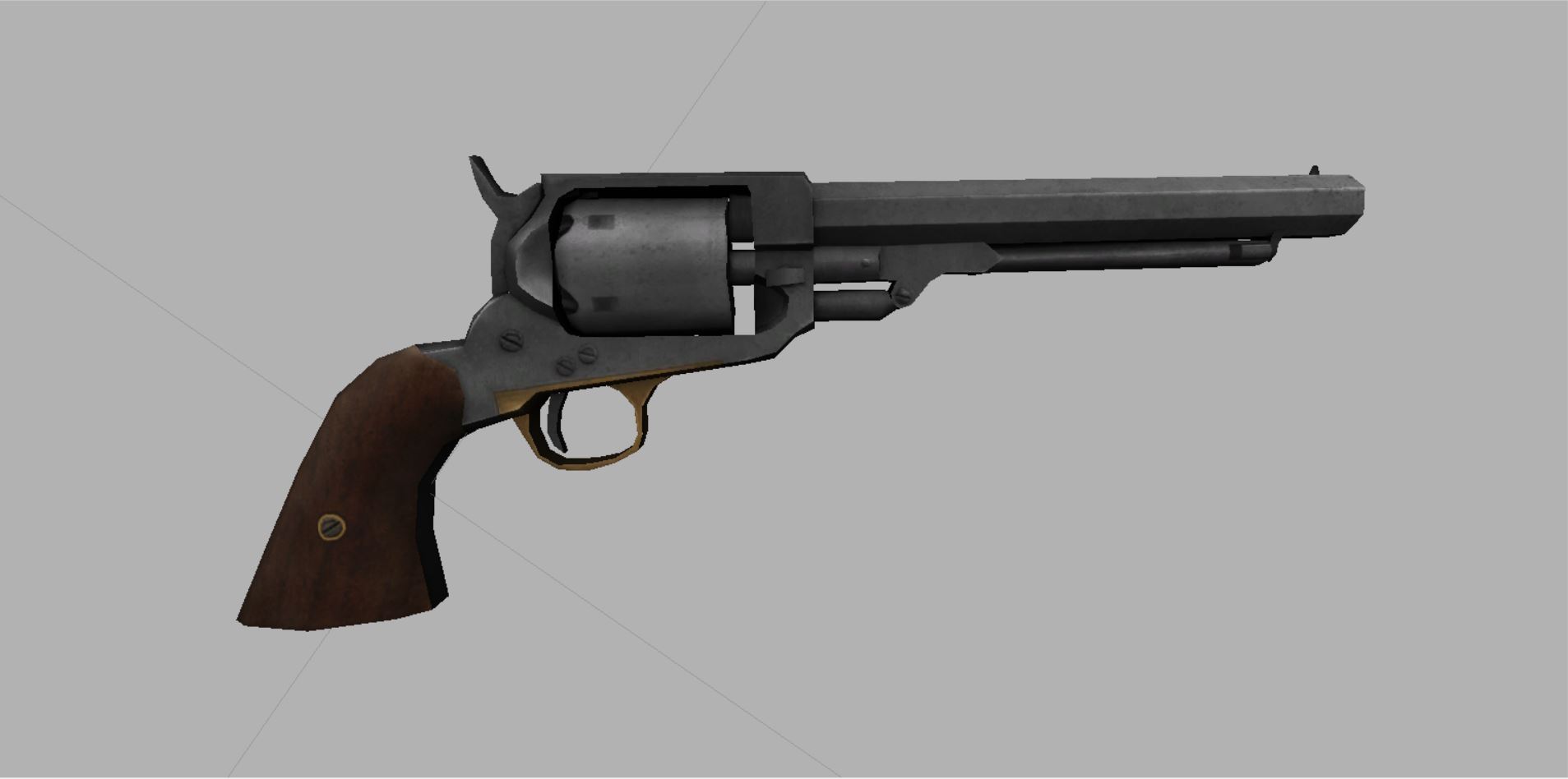


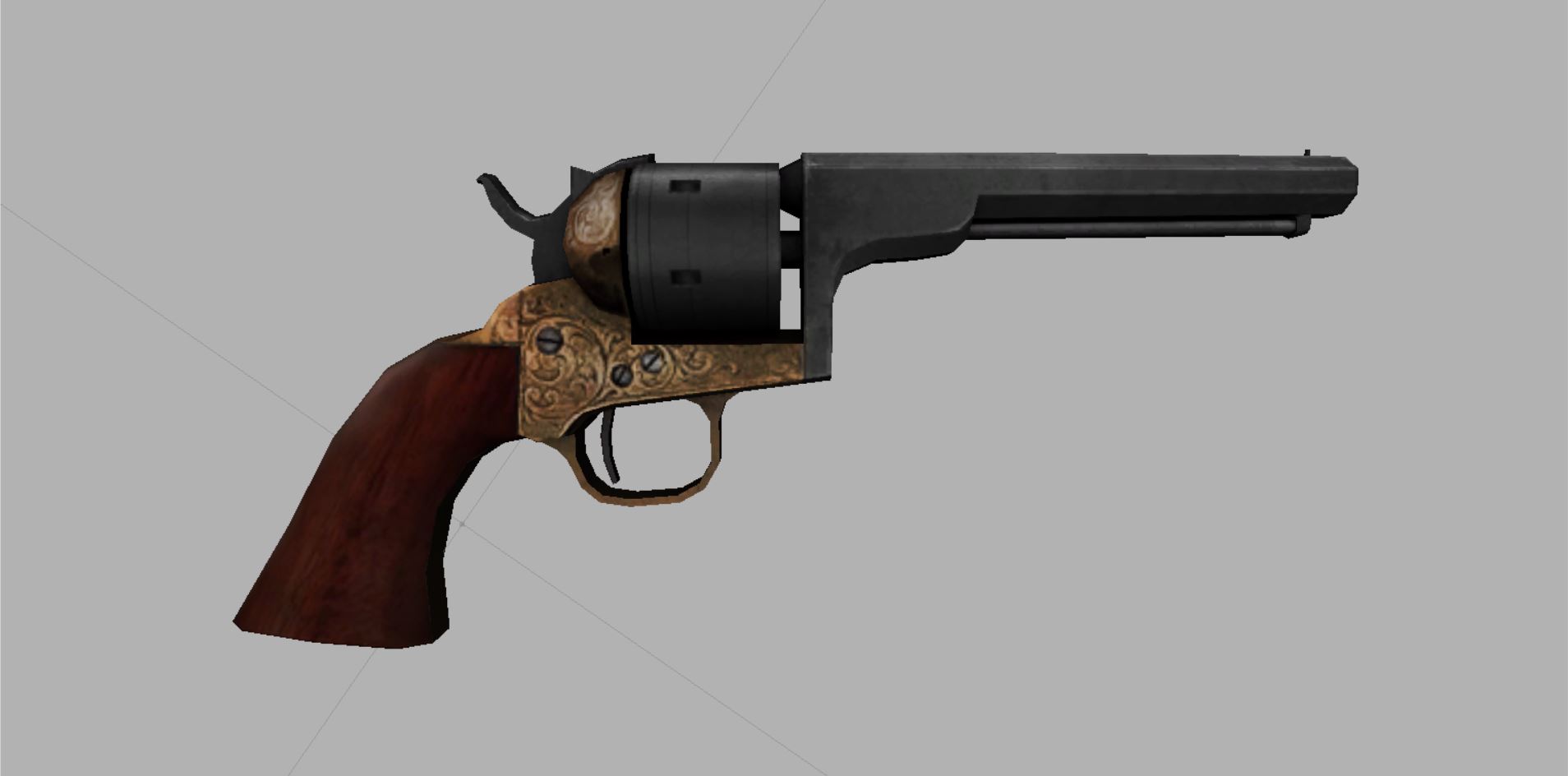


Oh boy... Christmas is early this year!
Great to see, that some more of the Battlefields and townscenes are coming to life.
Glad you like it! Have fun with the mod. :)
This version is probably the very best 19th century America mod yet for Warband. I love it, but I am getting quite a few crashes to desktop when I choose "walk around the streets" in some cities. It doesn't happen all the time, but often enough that I'm having to save very frequently to work around this.
Hi, thank you for the praise, I'm glad you are enjoying the mod! If you are getting crashes when entering town centers, you just need to lower your graphical settings. My suspicion is a lot of the junk code that is in the mod's source is hogging up resources, and some of the buildings may also be poorly optimized, so lowering your settings will free some of that up and mitigate those crashes.
Thanks for the tip, and thanks for this great mod! I just had one of the most intense Warband experiences ever when my Rebel cavalry platoon and I charged into a Union advance and my horse was shot out from under me. I managed to kill a few of the onrushing solders and mount a horse from one of my dead companions to get away. It was like a scene from a movie!
That's pretty cool, I'm very happy that you are having so much fun! Really does feel like a movie sometimes when you allow yourself to get immersed. A lot of intense moments like that happen when you get into the big battles.
I've found the bugle calls and war cries have also really helped with the immersion. Some of my favorite moments are leading my troops on horseback and breaking an enemy attack, then giving the rebel yell or the Union's shouts and huzzahs. Hearing the shouts and cheers as we drive the enemy back can be thrilling. Really helps bring those moments to life.
By the way, if you ever have any good war stories and feel like sharing them, we have a channel on the mod's discord for players to share their after action reports. :)
Great mod! But can you add distant musket / rifle sounds like WFAS / L'aigle has?
Thank you so much! Please refer to the frequently asked questions on the download description for an answer to your question. :)
I keep getting a fatal runtime error whenever I attack the native americans or gettysburg
Just lower your graphical settings.
Can you use the telescopic sight? If yes, what button to press? Thanks
Sorry, no telescopic sights in this mod. There are rifles with scopes on them, but they function the same as the other rifles. They are more accurate than the standard rifles, but the only zoom function you have is the default one.
Maybe when the source is rebuilt, I could figure out how to implement a function to aim down the sights of the guns, but I make no promises about that and have no plans to do it at this time.
Thank you!
Hello, great job, thanks a lot. The mod is awesome.
A few bugs, worries...
You said it, no artillery.
The south has three armies, the North only two. Too unbalanced. But after all, why not ? Historical reality is reversed...
The prisons have disappeared. Their doors lead to arena. The outpout headquarters lead to prison, sometimes..The prison outpout, when you managed to get in, leads to...headquarters. Tavern outpout, too. So, impossible to rescue any prisonner. When you play North and several generals are prisoners, even more unbalanced..
Several bridges became impossible to cross.
The troop tree. All units lead to "color guard" ones who wear standard. They are weak. Two or three standards in army is cool but 20 or 30...Before upgrade them to next level, I think you have to increase yourself to level 20 or more. So, in the meantime, stop upgrade.
Armies often make peace, not for real, message appears on screen and the war goes on. But "you" are not at war any more with your ennemy. You must attack farmers or general to restore war.
Thank you again. I imagine the amount of work that developing such a mod requires. Well done.
Forgive my english, I'm a french guy...
Have a good day
Hi, thank you! I'm glad you are enjoying the mod! Thanks also for the bug reports, always appreciated and helpful.
The balance issue with there being 3 confederate factions to the Union 2 is a known issue and in the future I plan to add a new Union faction to fix this. But this will mean adding new cities, castles, and villages, as well as new generals, so probably not going to come for a while.
The issue with the passages is something I have just discovered myself yesterday. No idea how this happened, but apparently all the numbers that refer to the different passages was changed to be the next number up. They all actually have the correct numbers, according to the available scene editing tutorials (this is the specific one I refer to: Forums.taleworlds.com), and they did work before, but now for some mysterious reason, this has been changed. So something like, for example, the prisons, the number that the passage is supposed to be assigned in castles is 7, but now it is 8. So I have gone into every single city in the mod and corrected this, and I am now in the process of going into every "castle" to fix this as well. I've already completed the Union and Native American territories and confirmed the passages all work there, so I just need to finish fixing the passages in the Confederate "castles" and that will be that. I suspect this was messed up with source code being damaged, but I can't say for certain what exactly caused this issue. This is thankfully a very easy fix though, just a bit tedious because of the amount of locations that need to be addressed. Another couple hours of work and it will all be sorted out, and I'll include that fix in the next update, which I have planned for around Christmas time, or early next year.
In regards to the bridges being impossible to cross, are you talking about the passages still, or is this a separate issue?
With the troop tree, the reason the last upgrades are flag bearers and officers is because the ai will recruit entire armies of flag bearers and officers if they are made to be the first units you upgrade to. It's already a bit problematic how many flag bearers they recruit lol. It also makes sense for troops to progress through the ranks that way, and you are not obliged to upgrade all your soldiers to be flag bearers. If you have battle hardened troops that are ready to upgrade, just don't upgrade them until you need some new flag bearers and officers. It's kind of like real life, you may have a number of candidates qualified for promotion, but you can only choose a few of them. If the one's you choose end up dead, then you can replace them with the others.
The problem with the player being at peace while the factions remain at war is a known issue, but can be easily resolved for now in the ways you yourself described. Since this is an issue with code, this most likely won't be properly addressed until after work on the new source code begins.
This mod has been a big team effort, so I can't take all the credit, but thank you for your kind words. It's always very much appreciated.
No worries about your English, I can still understand you. Take care now, and keep your powder dry. :)
Thank you for your answer and clarification.
Indeed, I’m talking about bridges. The one between Gettysburg and Baltimore. The one north of Philadelphia.
As for the armed forces imbalance, I completely understand. Let’s wait and endure...quite a challenge.
About the tree, when I wrote to you, I was thinking about the same thing. It suits me, in the end, not to upgrade troops systematically. Battle hardened troops are quite good. I reached level 20 and suddenly could raise a zouave color guard - also level 20 - and add an officer to the troop. When I reach level 25, other officers will appear, I will then choose, as you say.
I am quietly looking forward to discovering your future updates...
Thanks to you, and your team.
Power dry, take care too :)
Oh the bridges on the world map! Yes, you're right, no idea why the player can't cross over. Very weird. I guess for now you just have to cheat a little bit and teleport over the bridges.
Thanks for reaching out and letting me know about this issue. I'll try to see if there's anything that can be done, I might be able to contact some other modders who know about editing the world map and see what they think about it.
About bug Player in peace each time - very often - factions make fake truce, the major disadvantage is that captured generals are instantly released, either in prison or in the list of prisoners. In this case, the task of the Nordists is all the more complicated.
In Warband, keeping enemy lords in prison is one of the most effective ways to overwhelm a hostile faction.
Thank you, King85, for your interest in player feedback, and for keeping the mod alive
Hi there, a fix for the issue of factions making peace will be included in the next update. They will no longer make peace offers at all, so things like the player remaining at peace when the script puts the factions back to war, or the captured generals being released, will be fixed.
Thanks for the feedback, it's always appreciated. Enjoy the mod, big things coming soon!
Good news. Thanks, King85, it's gonna be greater. The mod will be even more grandiose.
Looking forward to discovering the new version.
"Big things" are already welcomed...
Hi King85, a request...would it be possible to freeze the betrayals or at least to make possible and frequent returns in grace.
I remember that in the vanilla version of warband, it was unpleasant, after some time, to see factions losing their specificity due to very frequent betrayals and banishments. It didn't make sense anymore. Especially since the lords in question were losing their original names to letters and numbers.
In one mod - I forgot which one, sorry - at least, the traitorous or banished lords had to recruit the units of their adopted faction.
In your great mod, it is strange to see the southern town of Jackson suddenly go under the banner of the northern army of the Potomac because the confederate general in charge of it changed sides, or to see the northern army of Mississippi reduced to 5 generals, including Grant - the others having betrayed or left the territory.
Some periods of history, some regions of the world, in mods other than yours, can withstand a certain level of betrayal. The American Civil War, as well as the Napoleonic period, for example, are less amenable to such a treatment. Unless I am mistaken, no southern or northern general betrayed his side.
Thank you for your time
Yeah that's not done on purpose, it's just a feature that comes with native m&b warband. The threshold for generals being banished or committing treason has been made much higher now though, so it'll basically be impossible for it to happen in the next update. The option can't be removed entirely, however, because it will make it impossible to destroy a faction. The generals need to have the ability to leave the faction, because factions are eliminated when they have no lords or walled fiefs, and normally lords defect to other factions when their relationship with their king is too low, which drops whenever they lose battles. If there are no factions to defect to that have available fiefs for them, then they will leave the realm.
Now there is a script that gives all the generals max relationship with their faction leader, and they need to have extremely low relations to leave the faction, so basically the faction would need to be destroyed for generals to start leaving. You shouldn't be seeing generals randomly defect or be indicted for treason anymore. Instead, in an end-game scenario where a faction has lost most of it's territory, generals will begin to leave the realm, and the dialogue will state they have surrendered and disbanded their army so that it provides a specific and sensible explanation for why they are being eliminated from the game entirely.
Thank you for your clarification. It's always a pleasure to talk with you and to see how much you care about improving your mod.
The idea of a "surrender and disband" dialogue accompanying the ousting of a general is brilliant.
The level of immersion in the world that a mod offers is one of the determining elements of the pleasure taken to explore it. Battles in towns and small cities, during a siege or a pillage, are impressively realistic. Gettysburg, Shepherdstown, Fredericksburg, among many others, offer perfect settings. And this little thing, such an important detail : a general who receives a fiefdom does not become its lord but its military governor. The city does not belong to him, he is its temporary manager. It makes all the difference. It is a whole mental universe that you manage to arouse by your work. Thank you again.
Thank you, I appreciate all your feedback, though I can't take all of the credit. madsci has been a huge, massive help, and has done a ton of work to fix the mod and overhaul it. The dialogue itself was my idea, and I wrote all the conversations and menu changes, but he's the one that actually did all the scripting and coding work to make it happen the way I described. You'll be seeing a lot more of his incredible work in the next update.
Glad you're having so much fun, even though this current version of the mod has a lot of problems. The next update will certainly add a lot more to the feeling of immersion and completion to this project. Pretty much all of the bugs and problems have been resolved, and there is a lot more to reveal as well, so the next update promises to be the most polished version of the mod thus far.
Your honor to render to Caesar what belongs to him.
Eager to discover "the most polished version of the mod "
Merry christmas and all the rest..:)
Precedent message from Doulos83 not guest, I forgot to login...
Hi King 85, one more thing I was thinking...would it be possible to include the kneeling position? It offers great advantages in combat. You can hide more easily behind a wall, a fence, get out of reach of enemy guns, behind a small mound.
Thanks to you and your team
No, I will not be adding kneeling into the mod. Soldiers in the civil war did not kneel when in line of battle. Skirmishers and dismounted cavalry would, but there is no way that I am aware of to have only those specific types of units kneel in the mod, and that may cause other problems anyway, even if it were possible to do so.
Often times you are also frequently moving your troops around the map, advancing towards the enemy, or falling back, or otherwise taking up different positions, and it would slow down the movement of your troops to have the front rank constantly kneeling and standing up every time you issue a movement order. I'm sure this was the same problem in real life, on top of the fact that it is slower and more difficult to reload while kneeling or laying down. Constantly having your troops going between kneeling and standing would ruin the cohesion of your lines. It simply makes more sense to remain standing.
okay, I get it. although it seems to me that behind the Fredericksburg wall, the confederates were on their knees. not the line in open space indeed.
I was thinking about this possibility for the player only, but I understand that technically it is not possible to give this specificity to some people only. For the movement of the troops and the reloading, you are right.
The Confederates at Fredericksburg were standing while behind the stone wall. The height of the wall came up to about their chest. It would be impossible to shoot over the wall from a kneeling position.
It is actually possible to add crouching for the player only though. You can thank madsci for figuring that out. However there are some bugs with it, so we'll see if we can fix it. If not, then you might just have to live without being able to crouch.
I saw images of the wall and the position of the Confederate troops that I did not know, you're right.
Thanks to madsci for figuring out.
I will survive without being able to crouch :)
I stop bothering you...
Thanks, have a good day
No bother at all. But unfortunately it turns out that you can only enable or disable the ability to crouch, there is no way to have that ability work only for the player. So there will be no crouching in the mod.
okay, no worries. let's face the adversity and the opponent, stand up.
thanks for all your answers